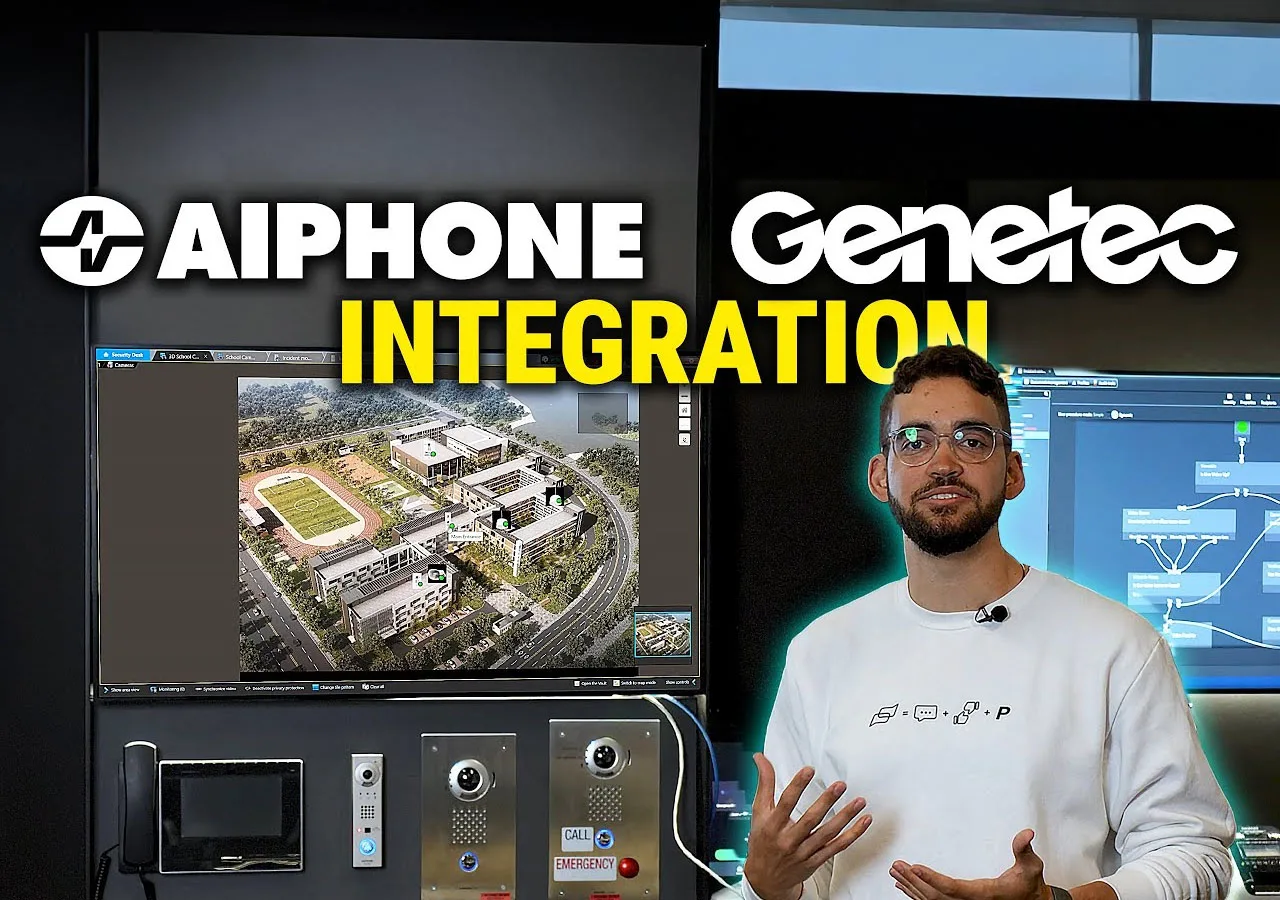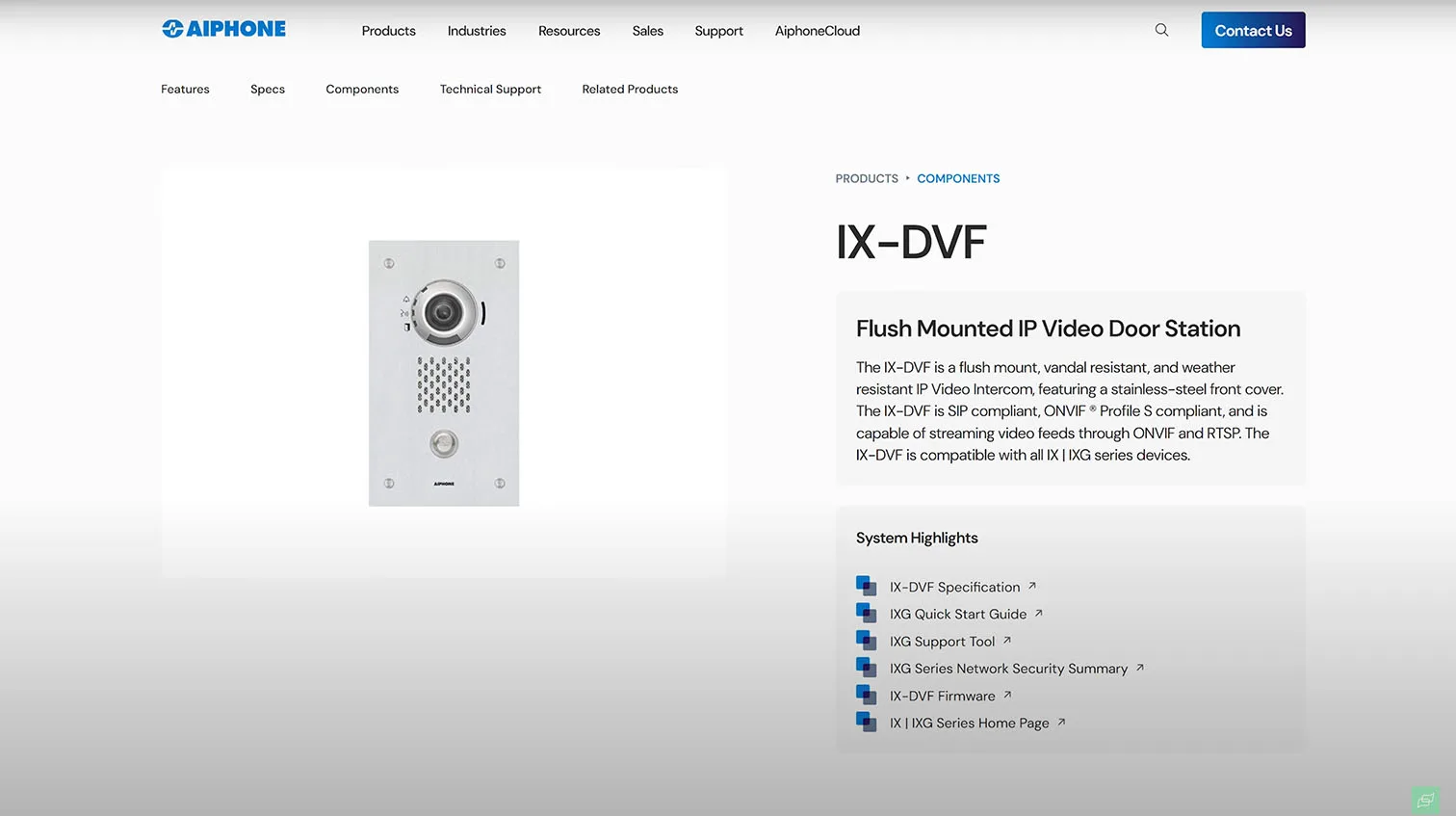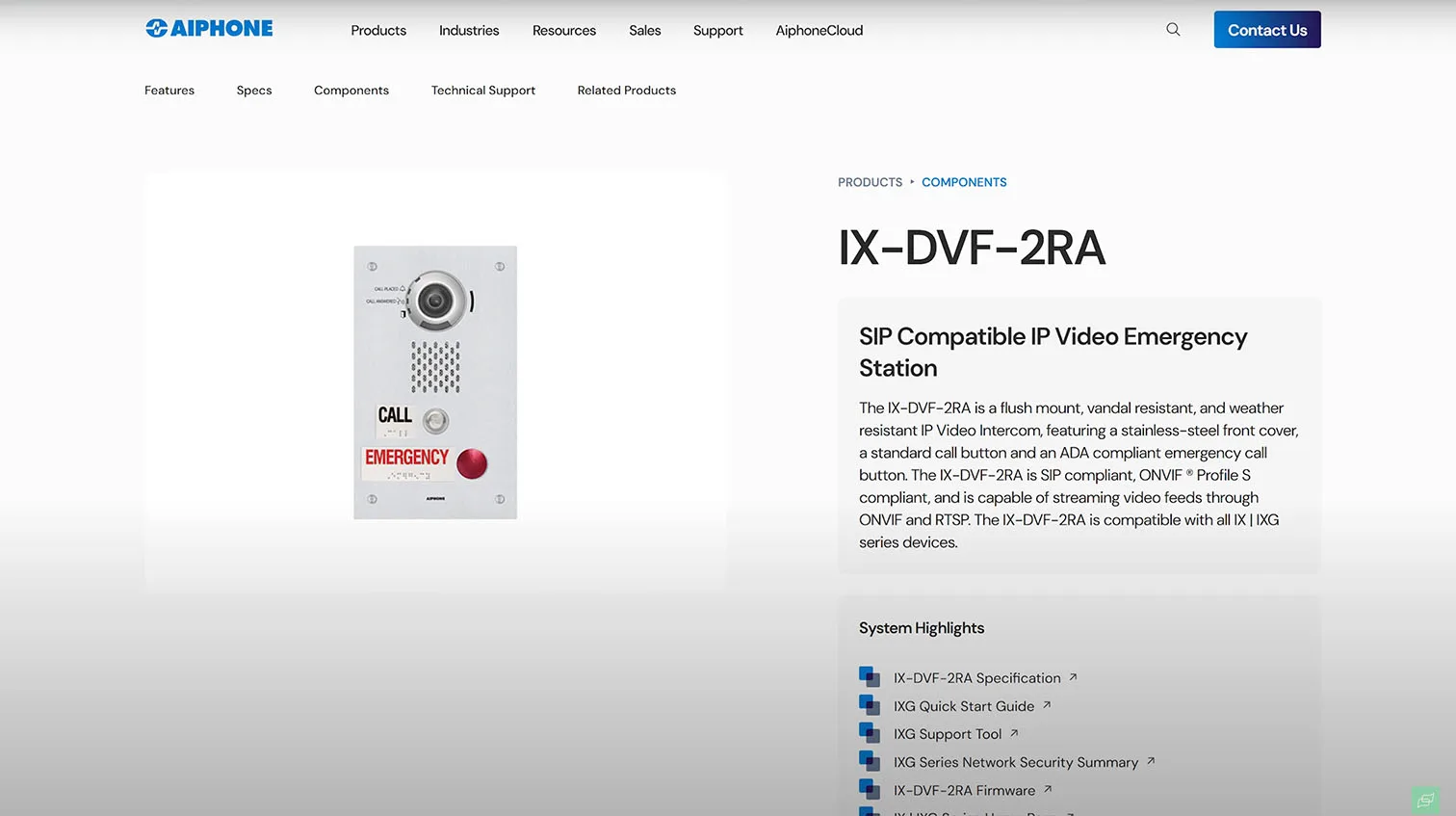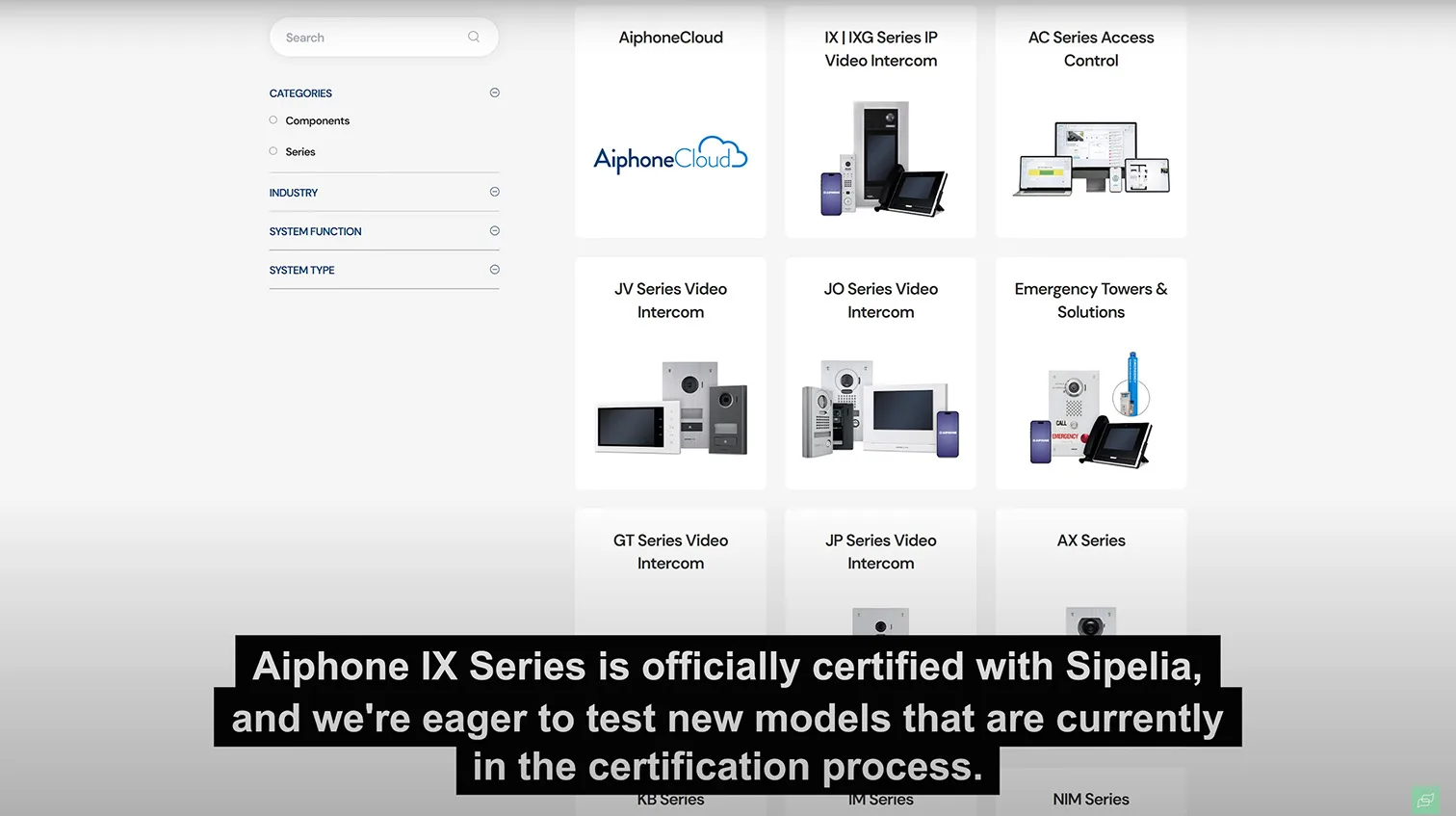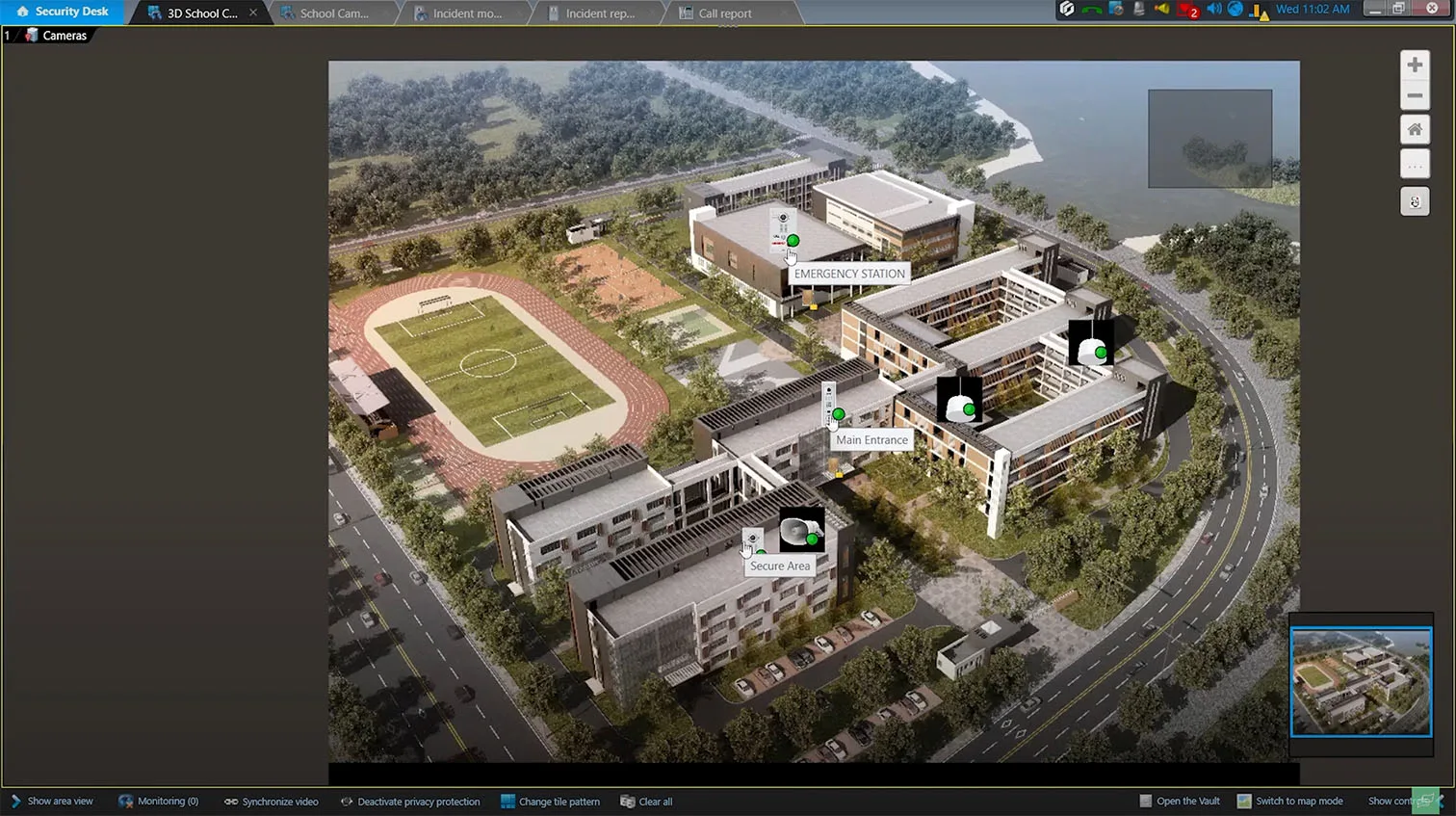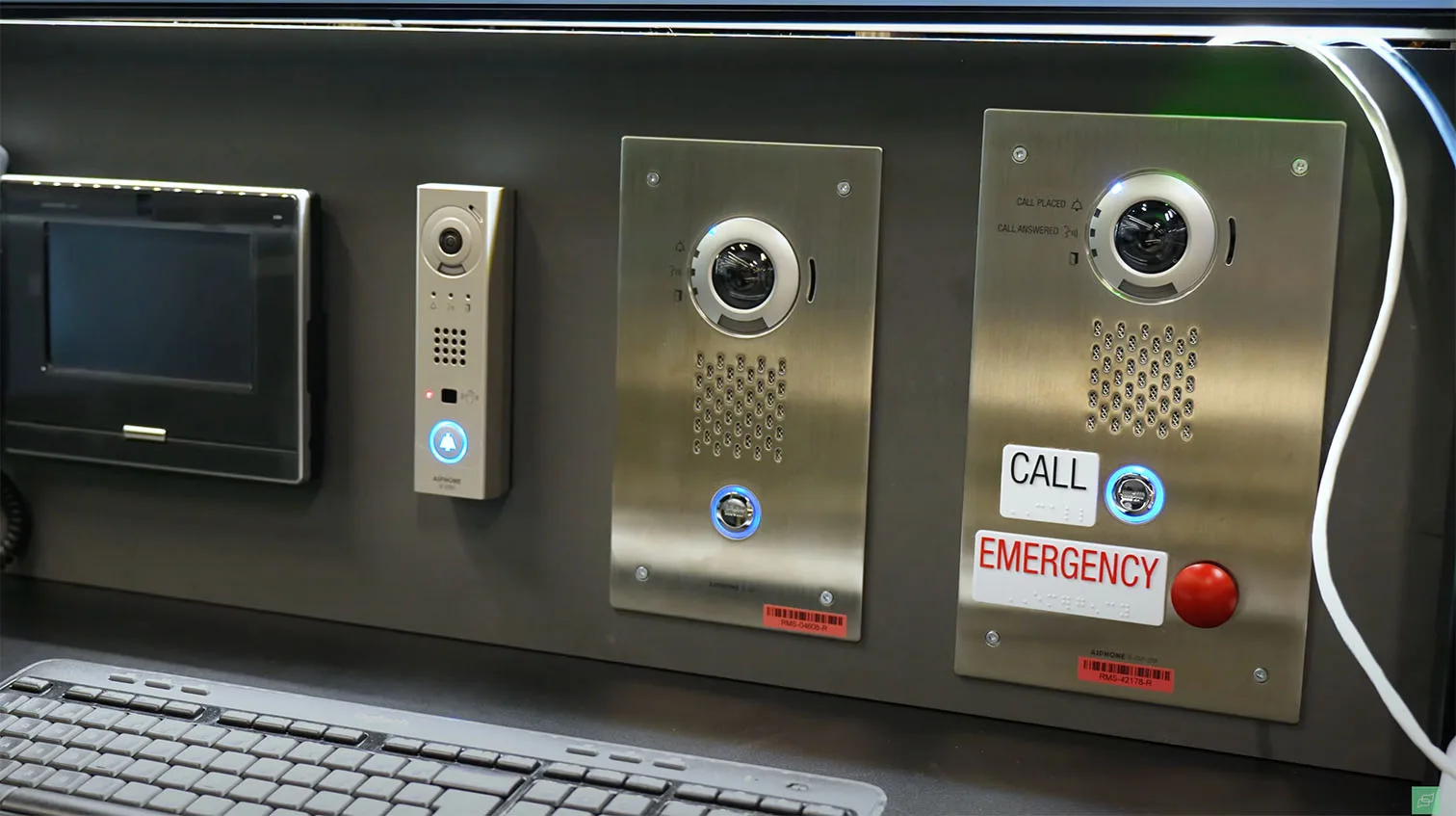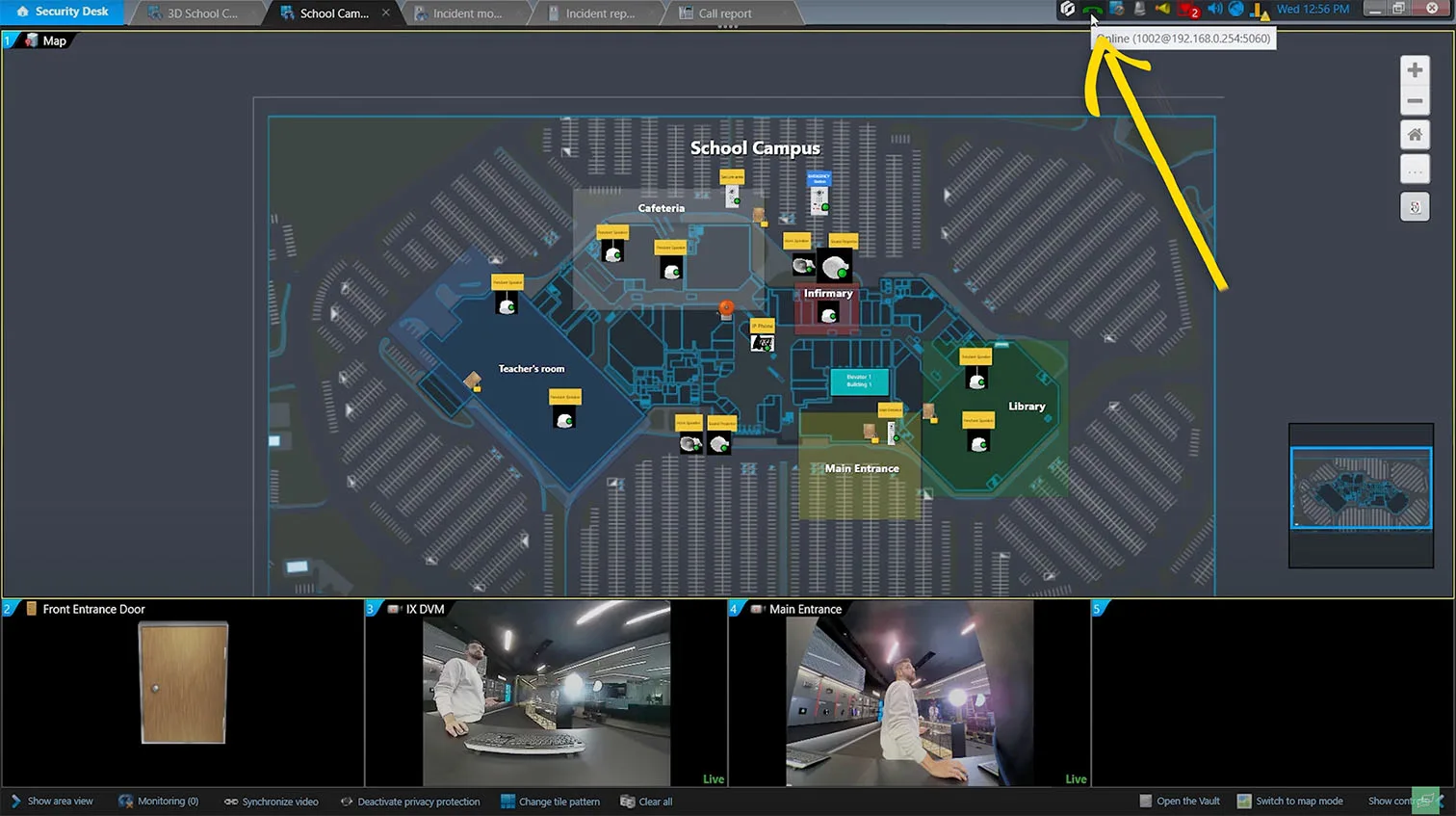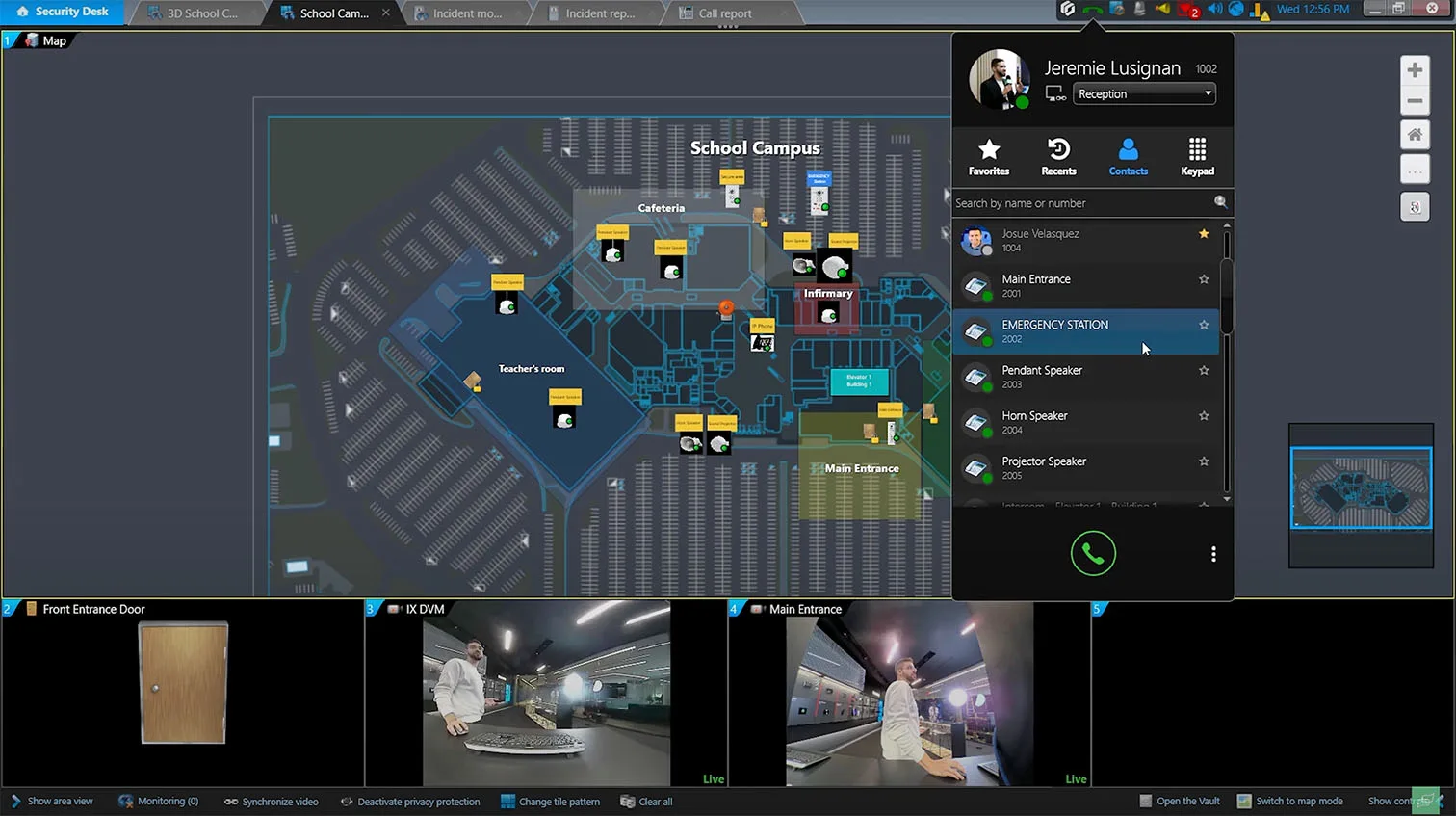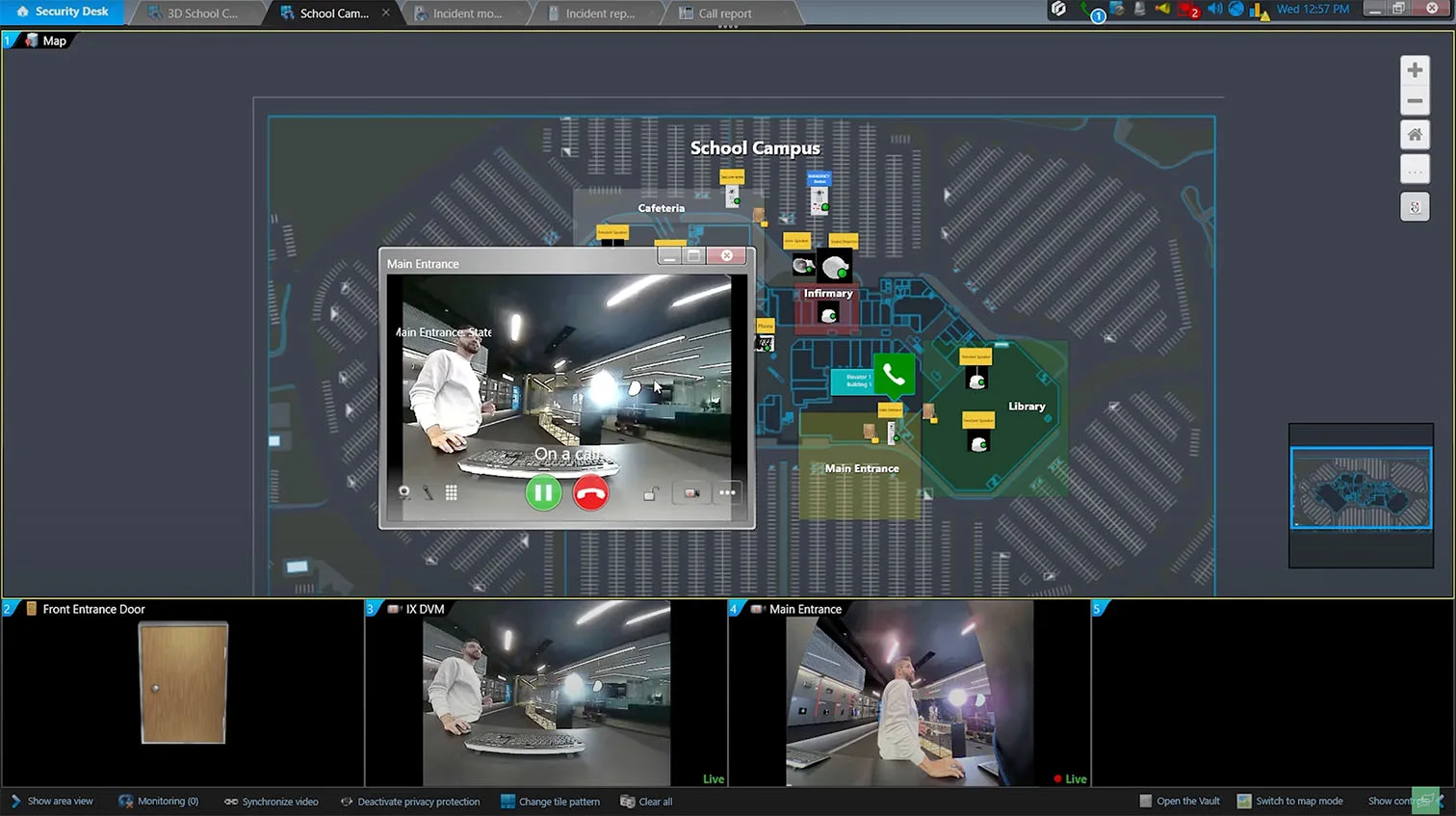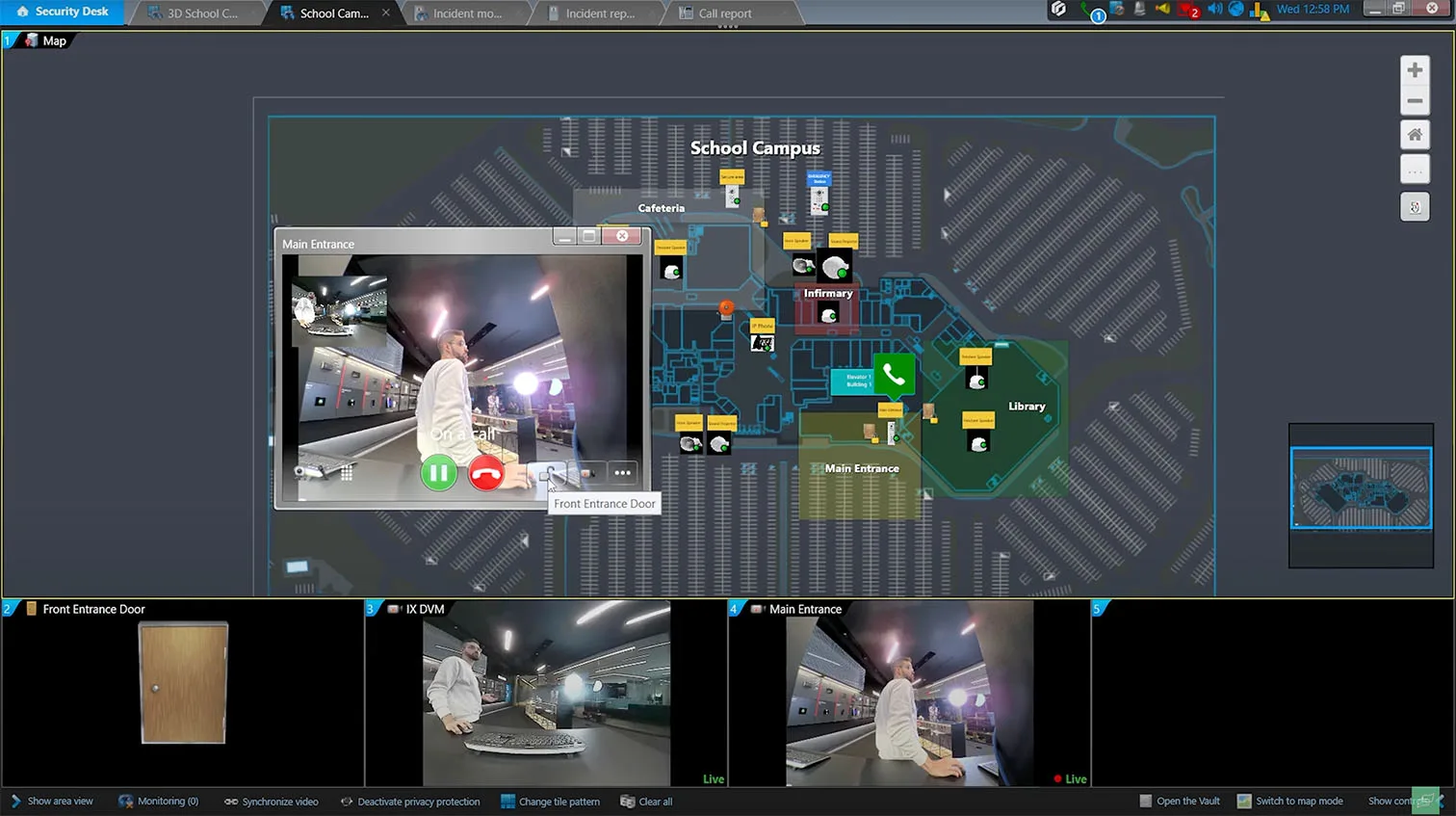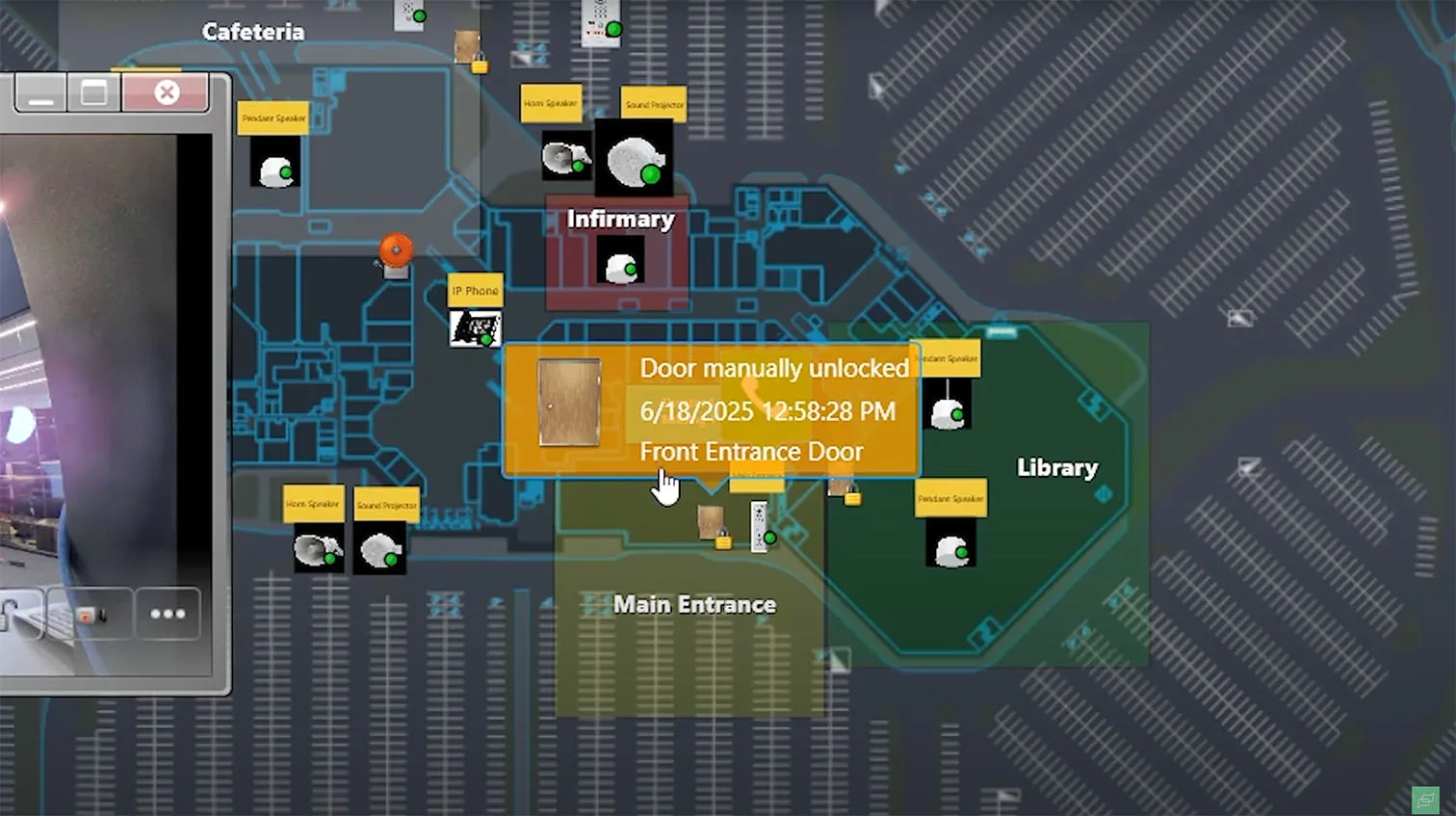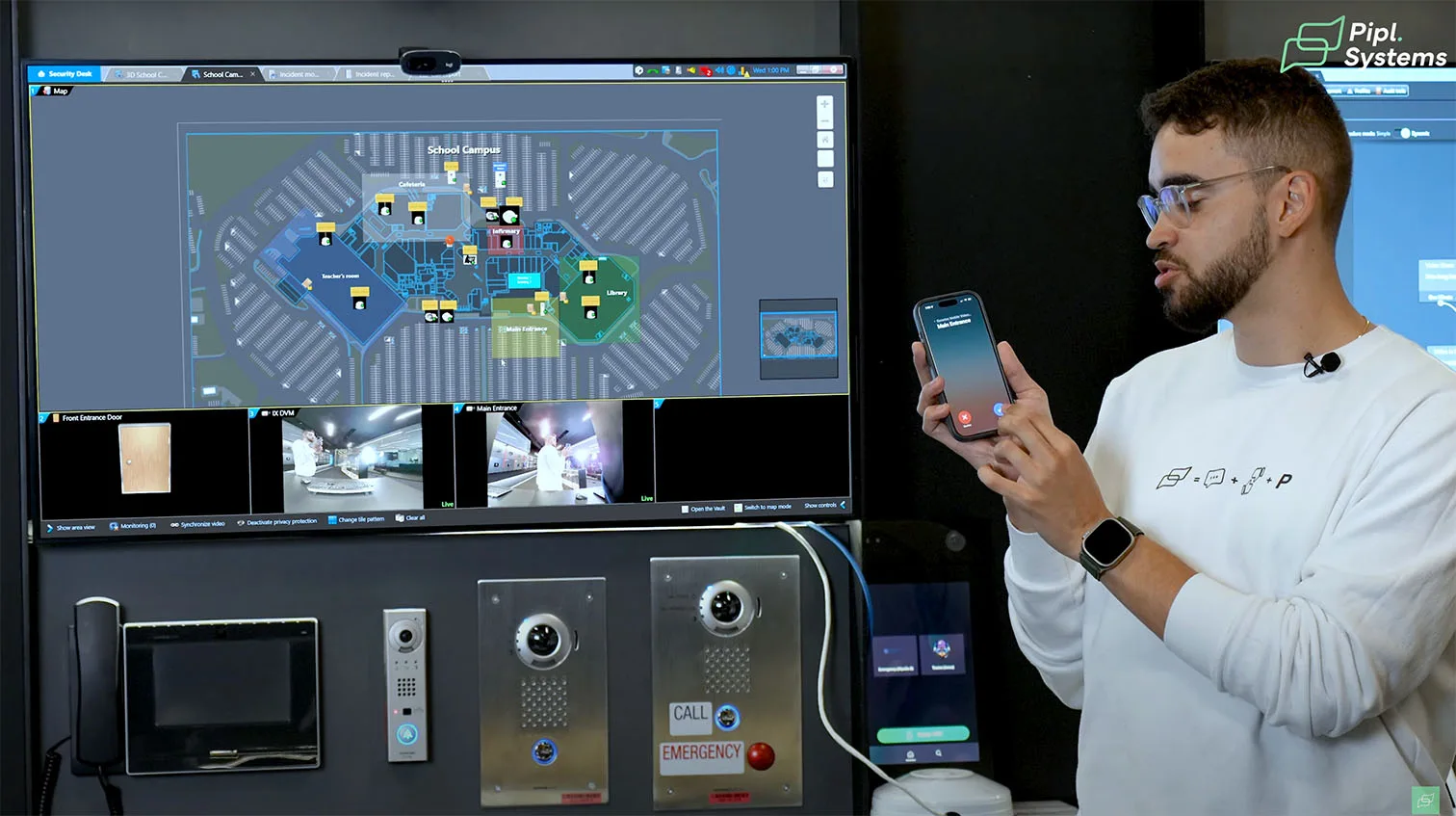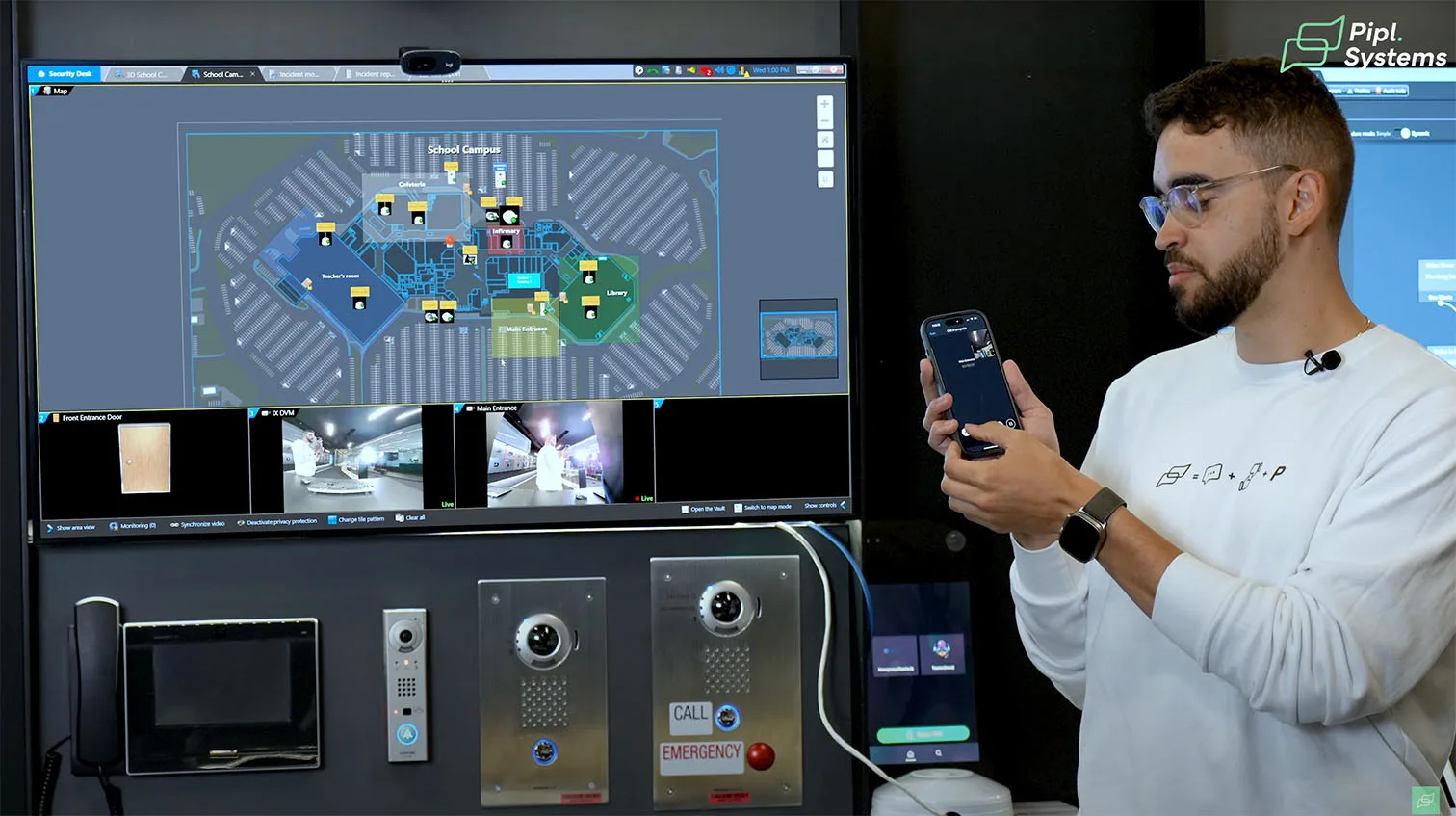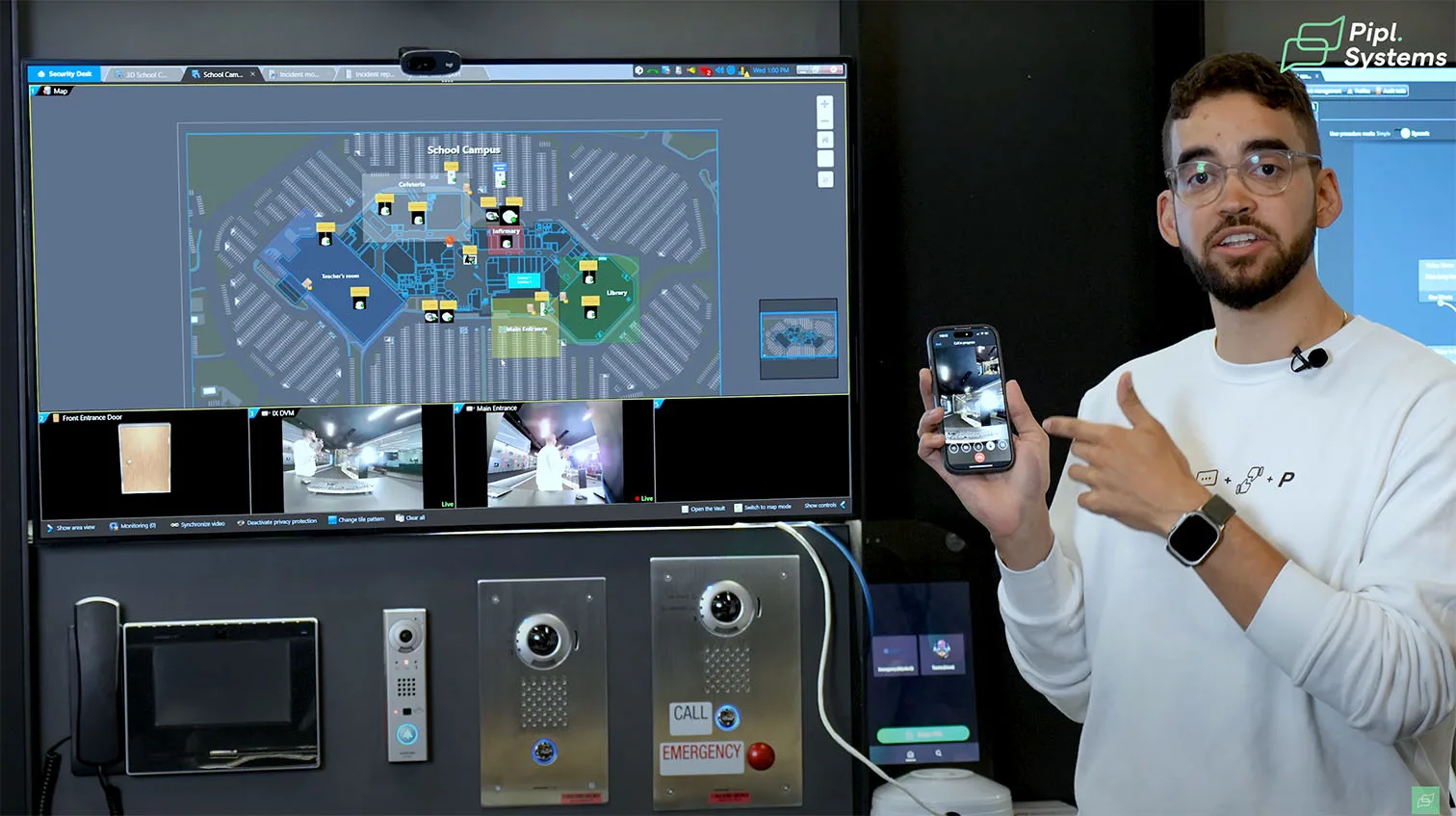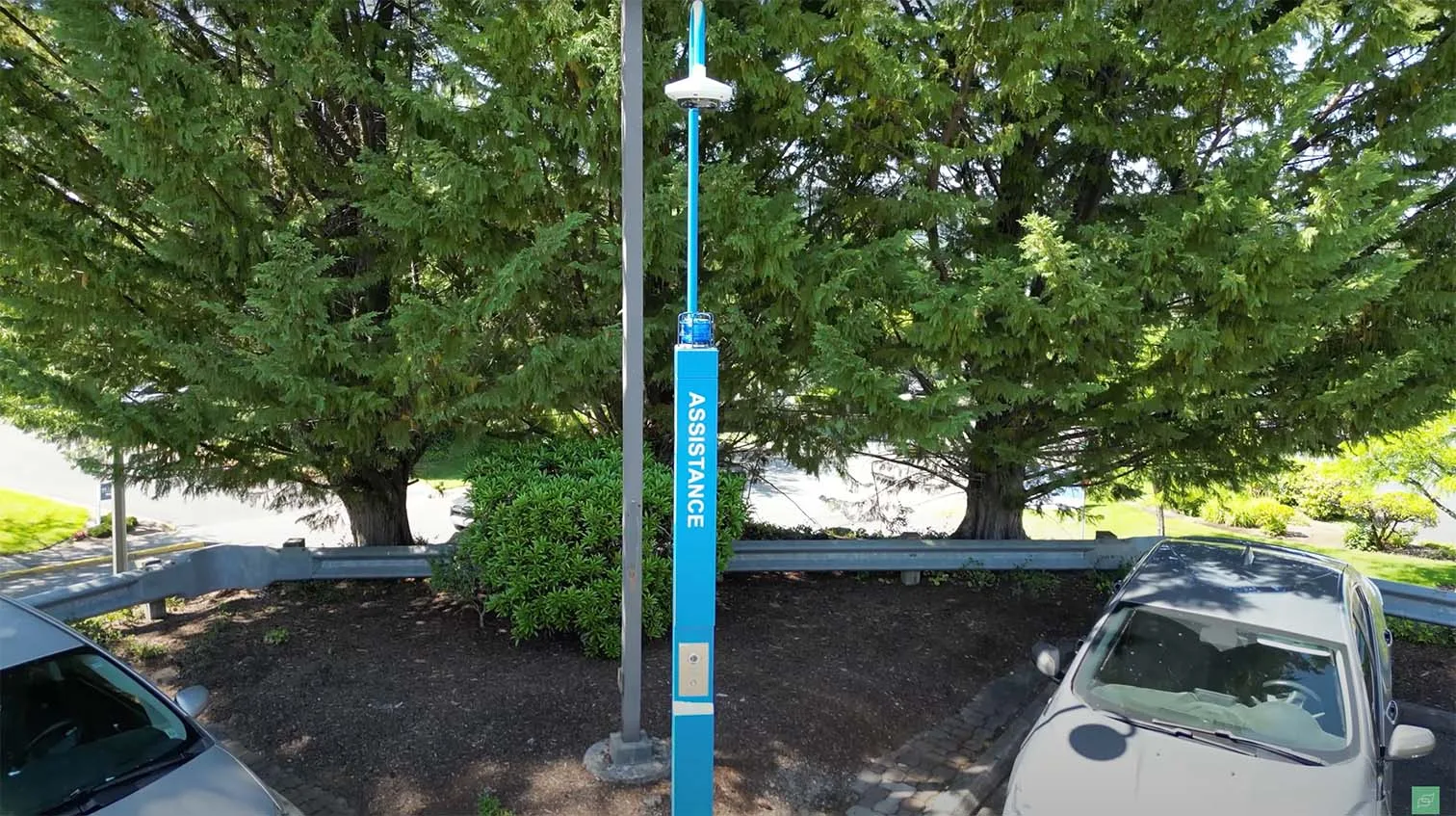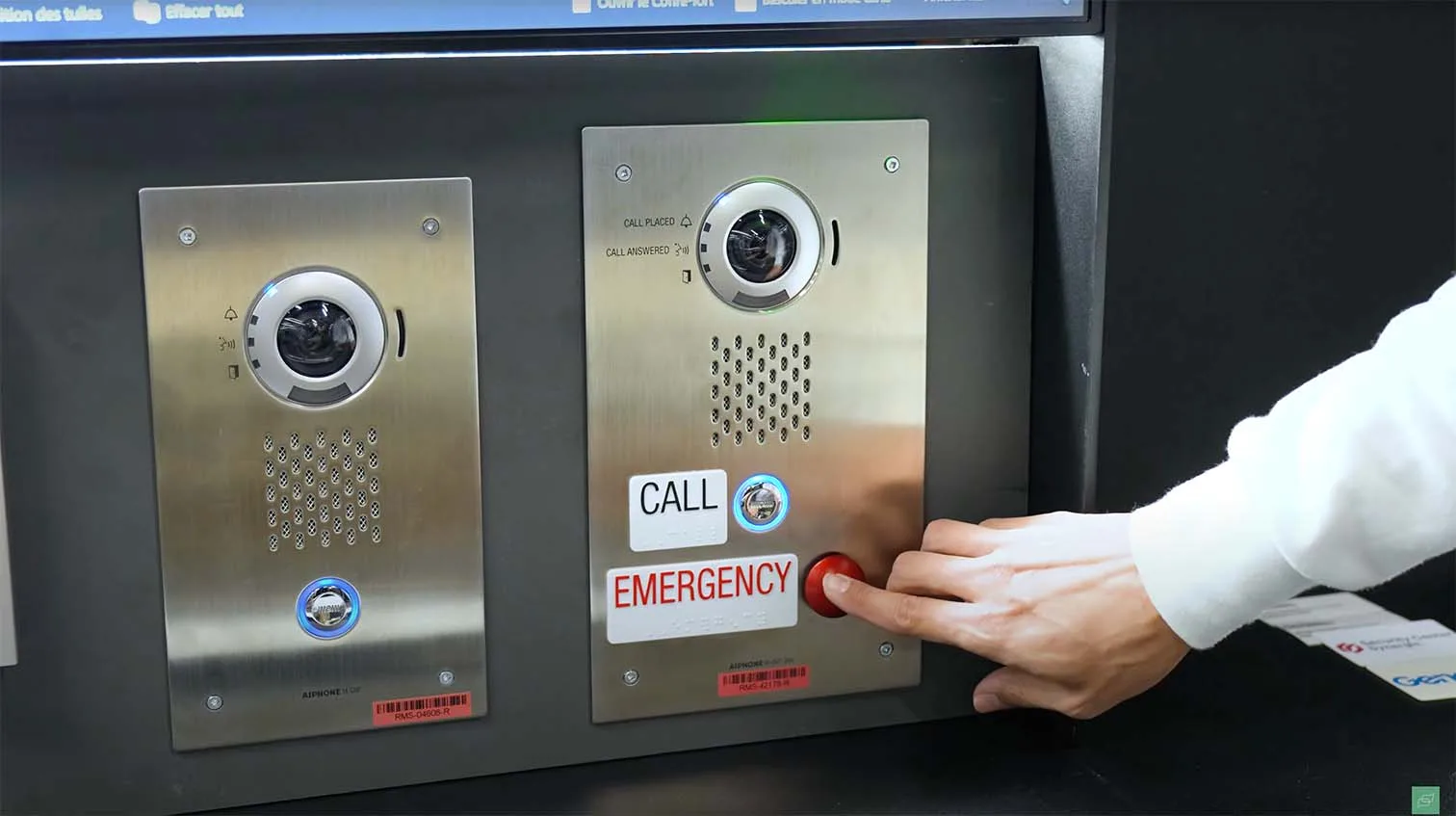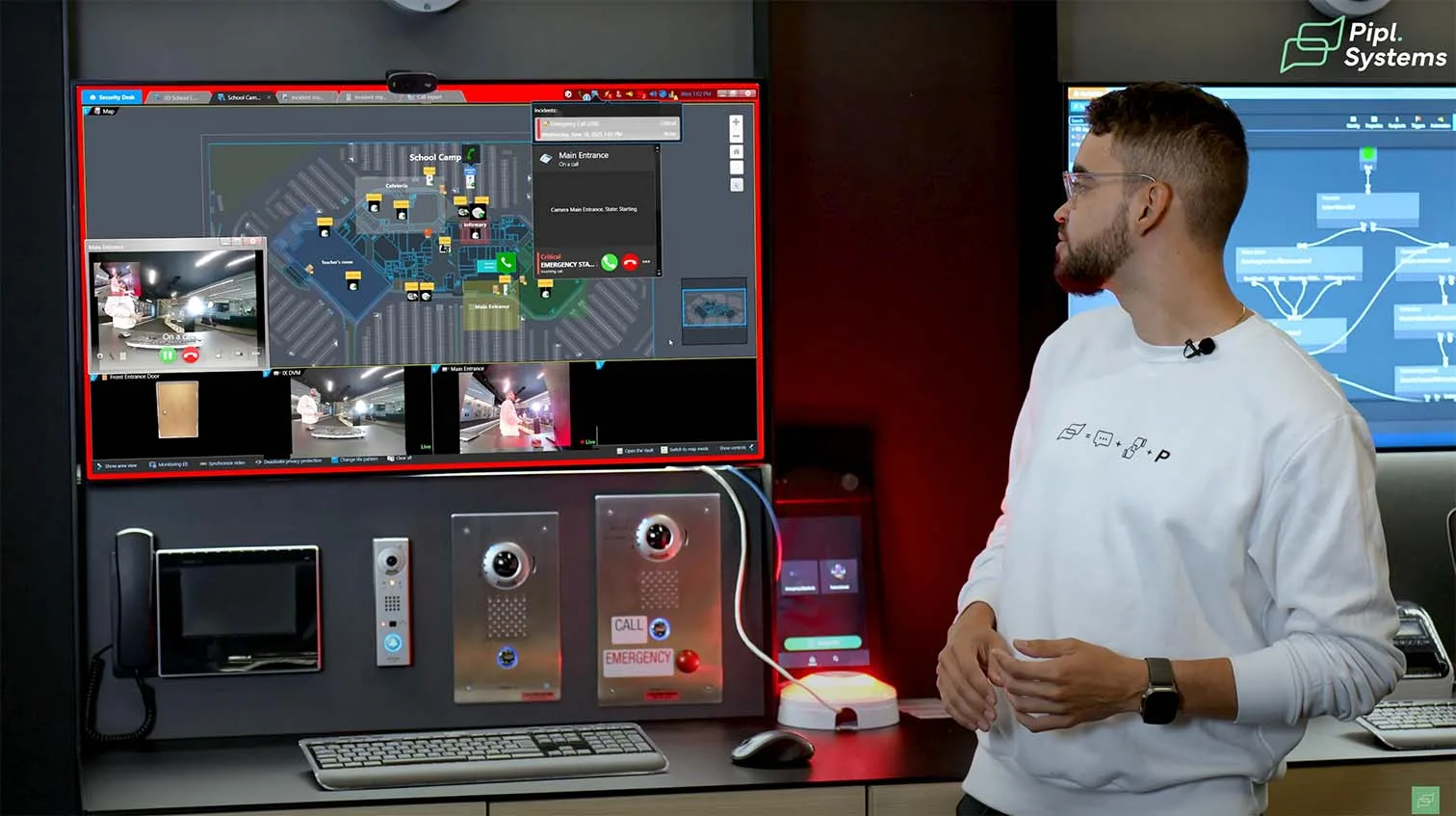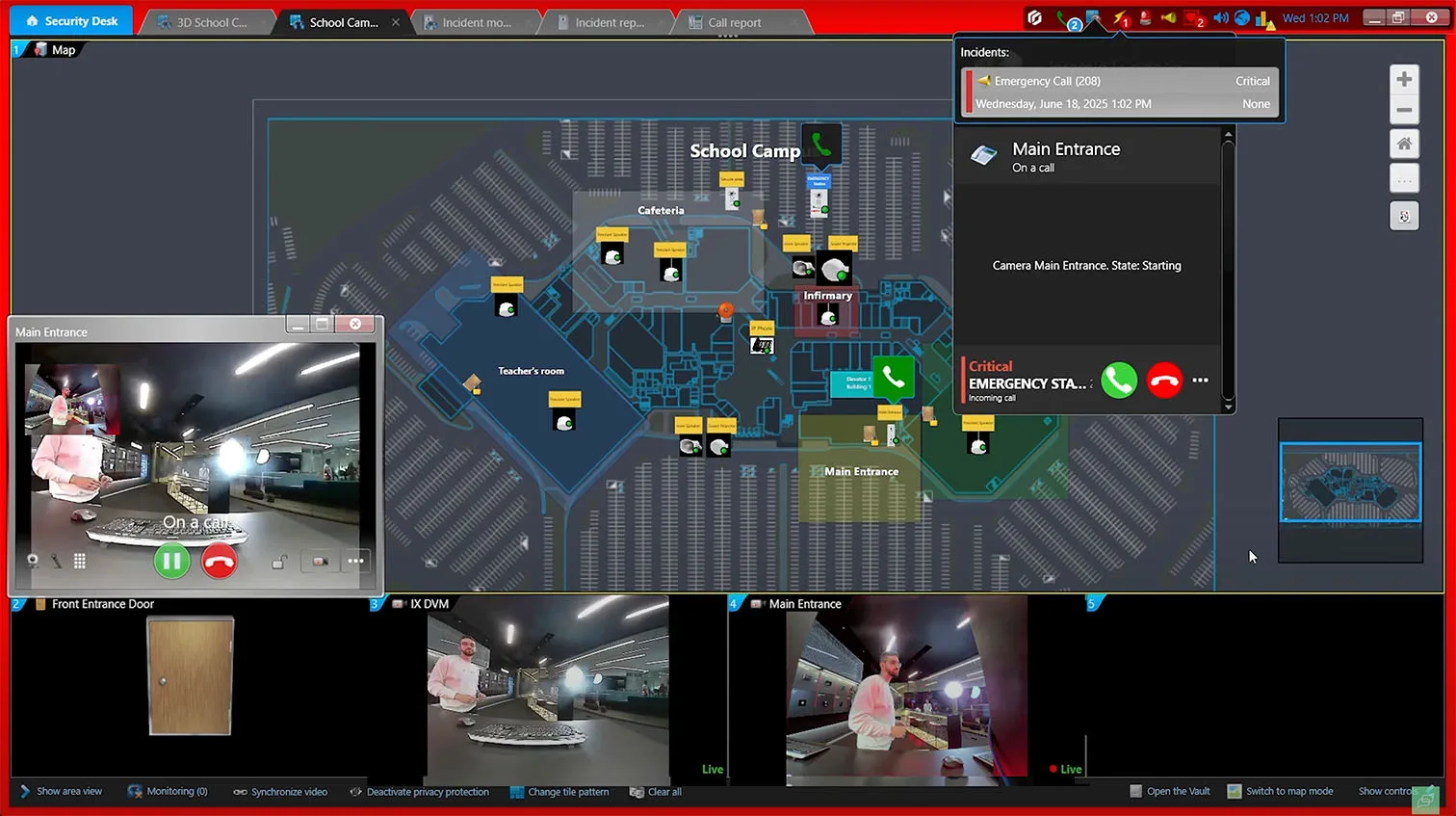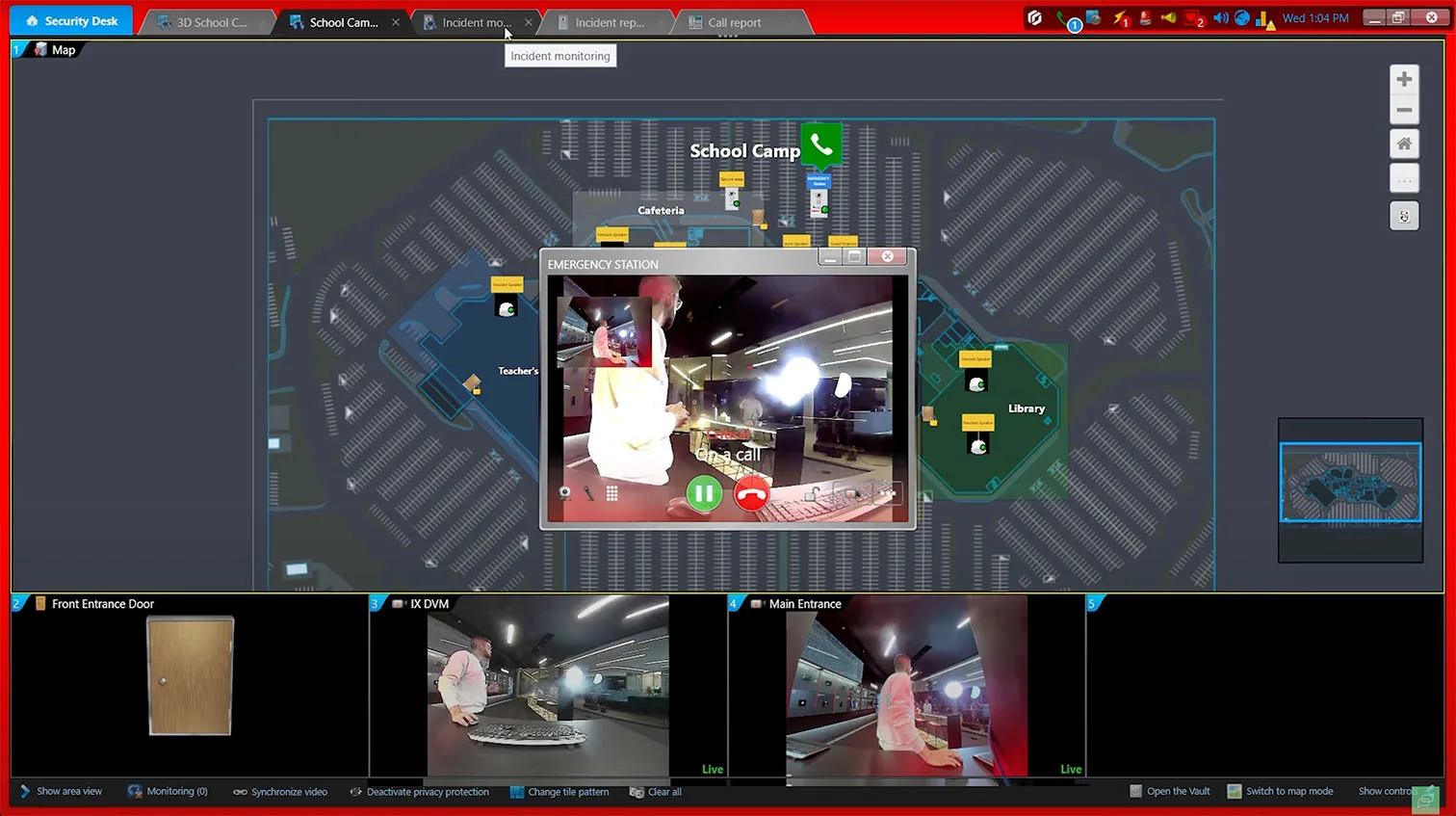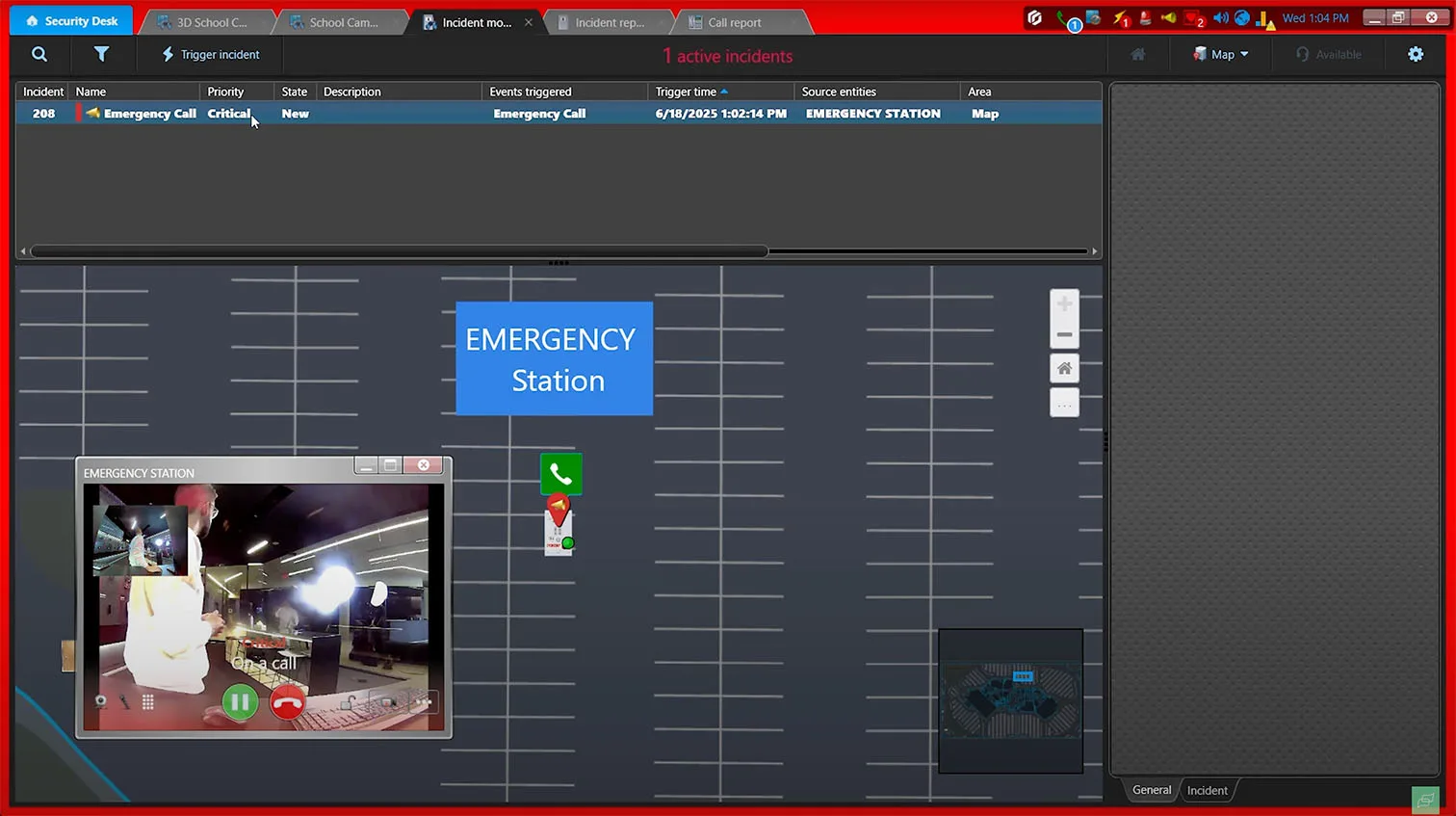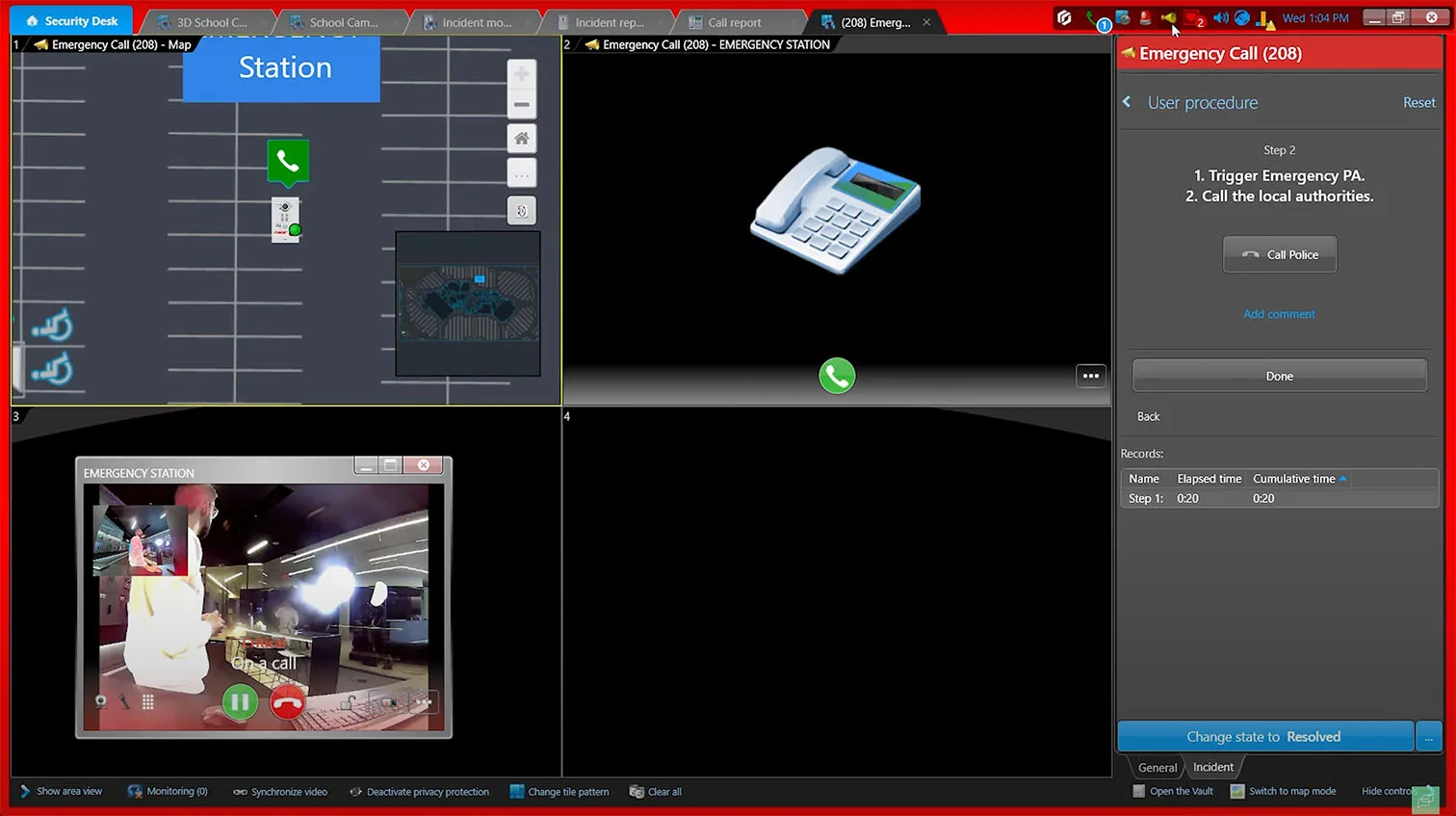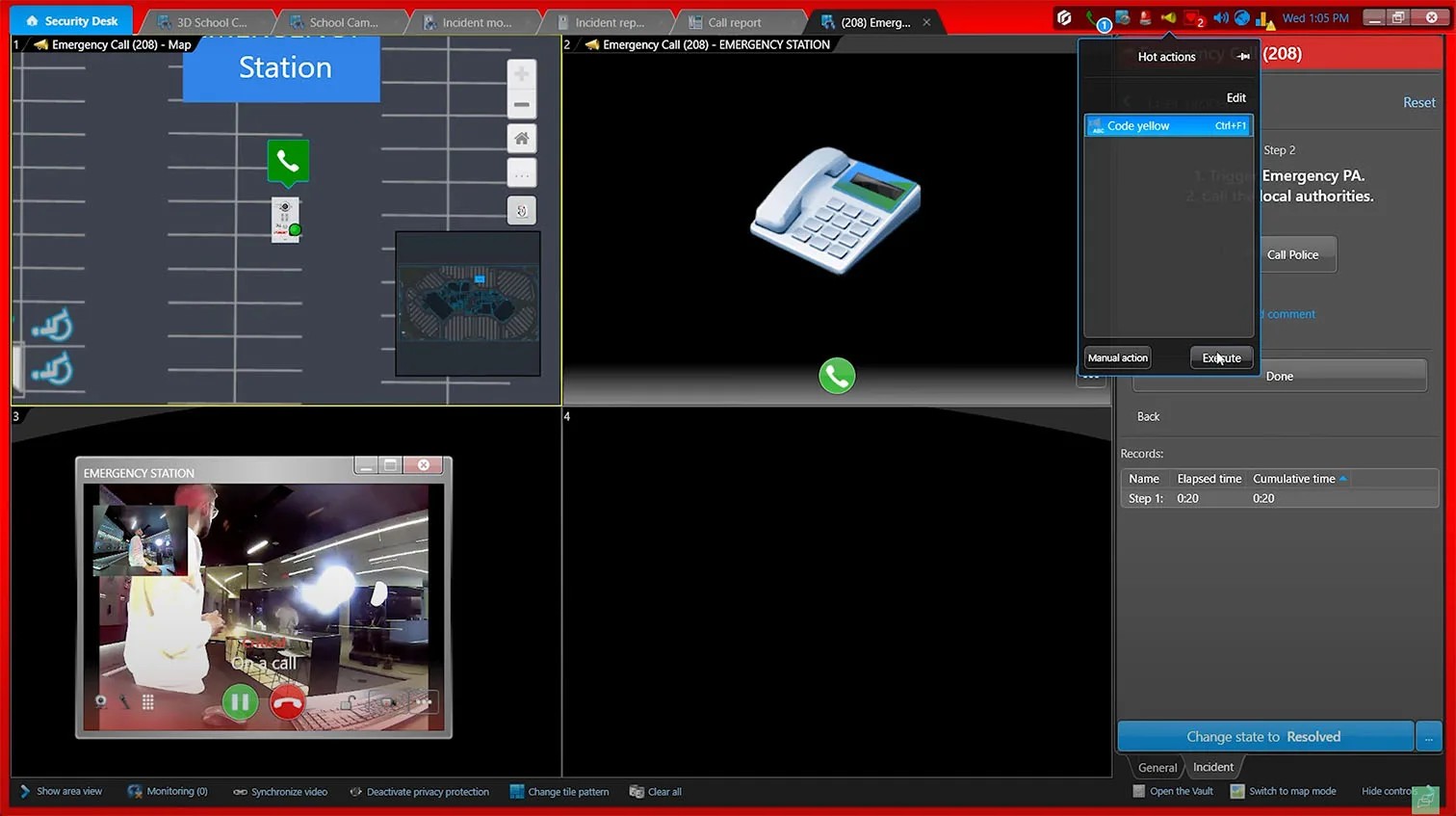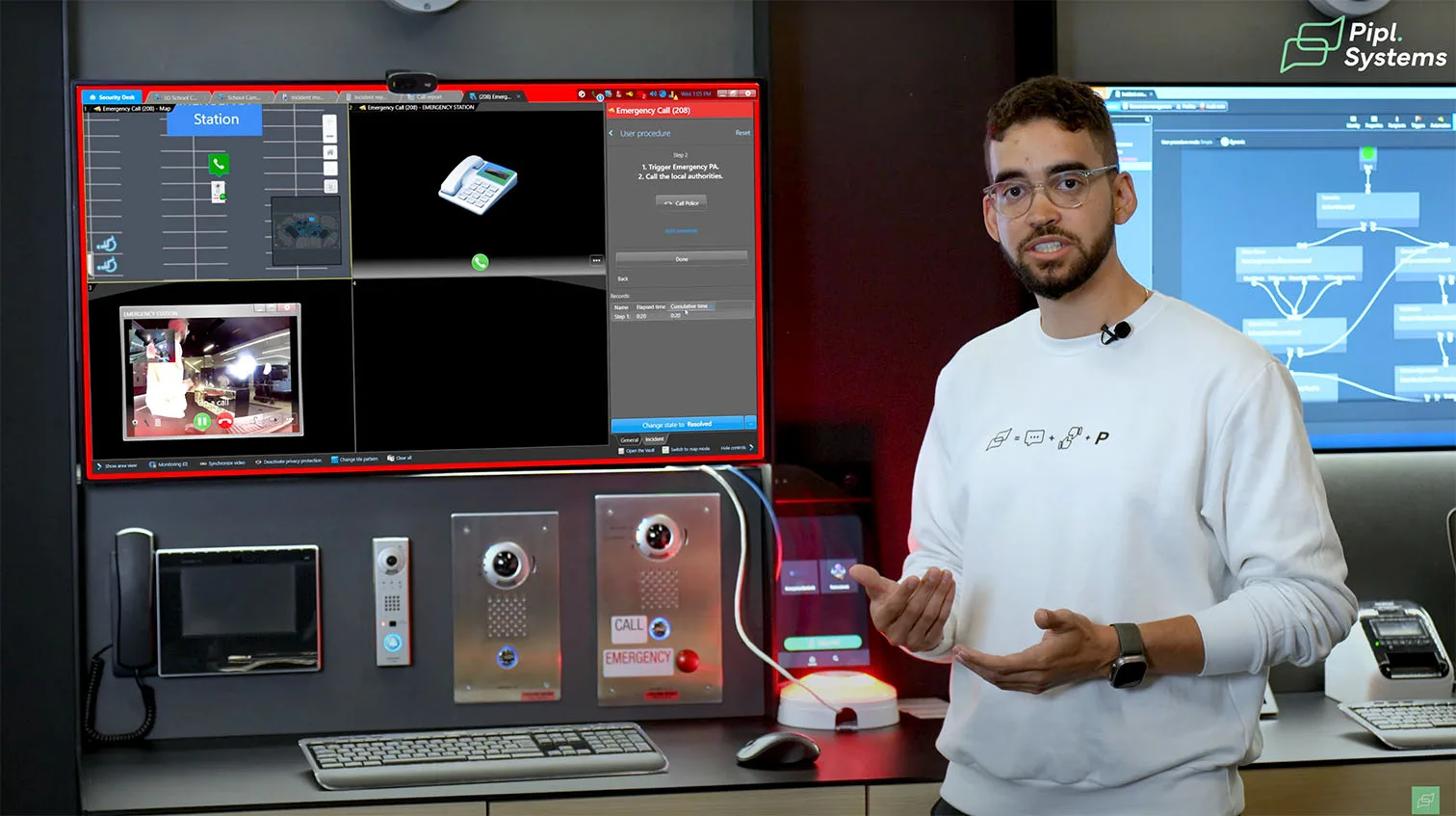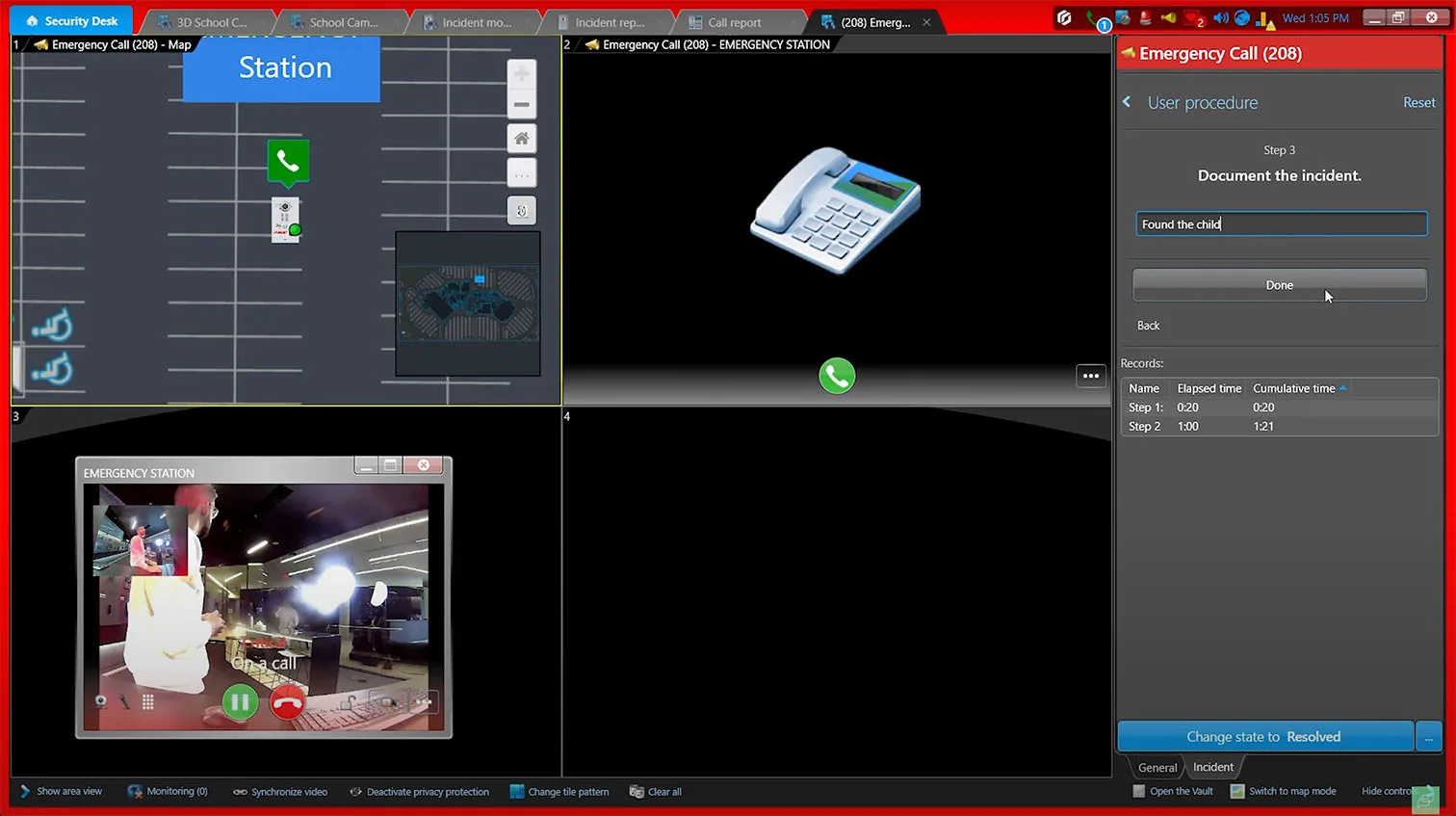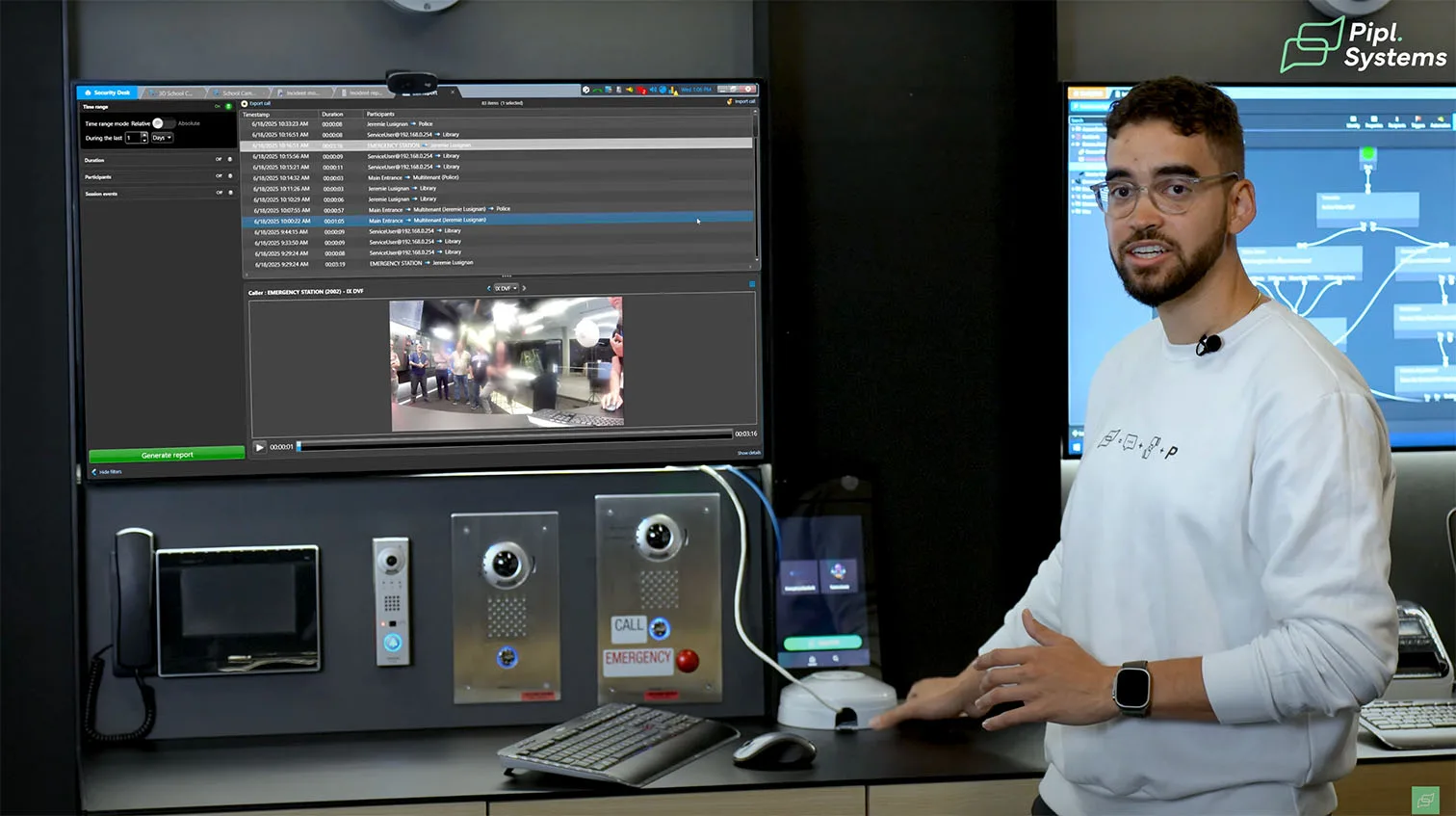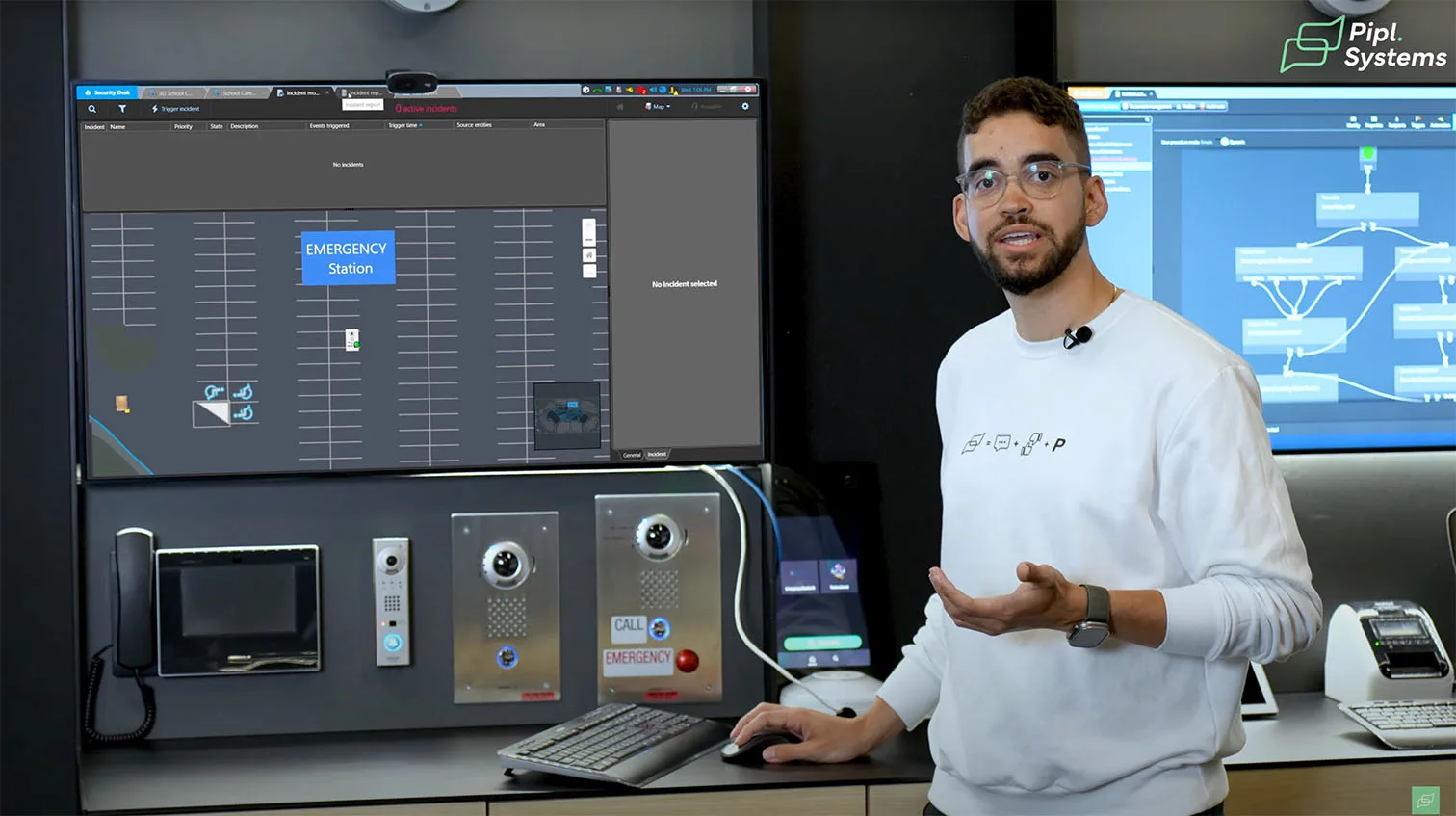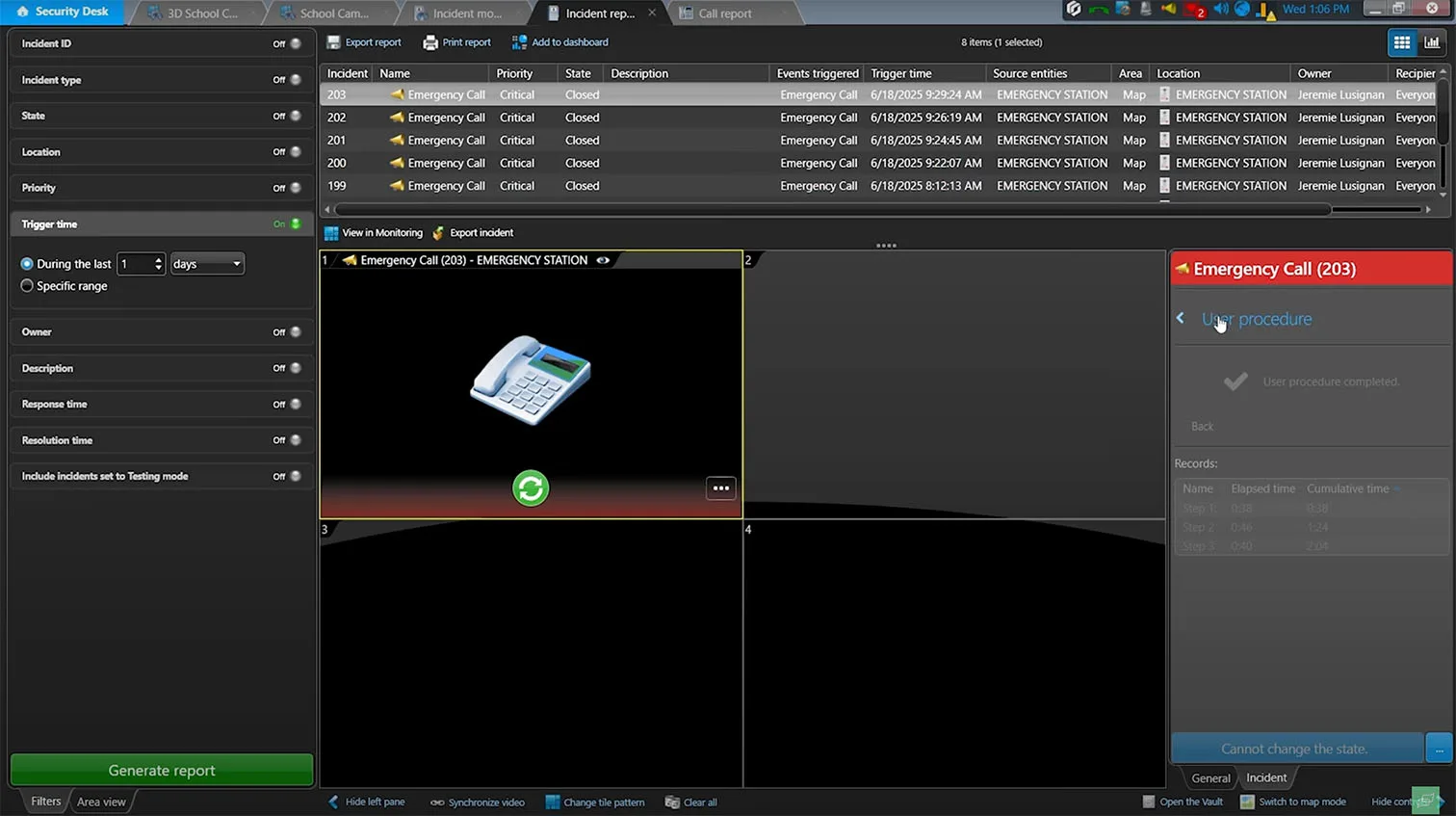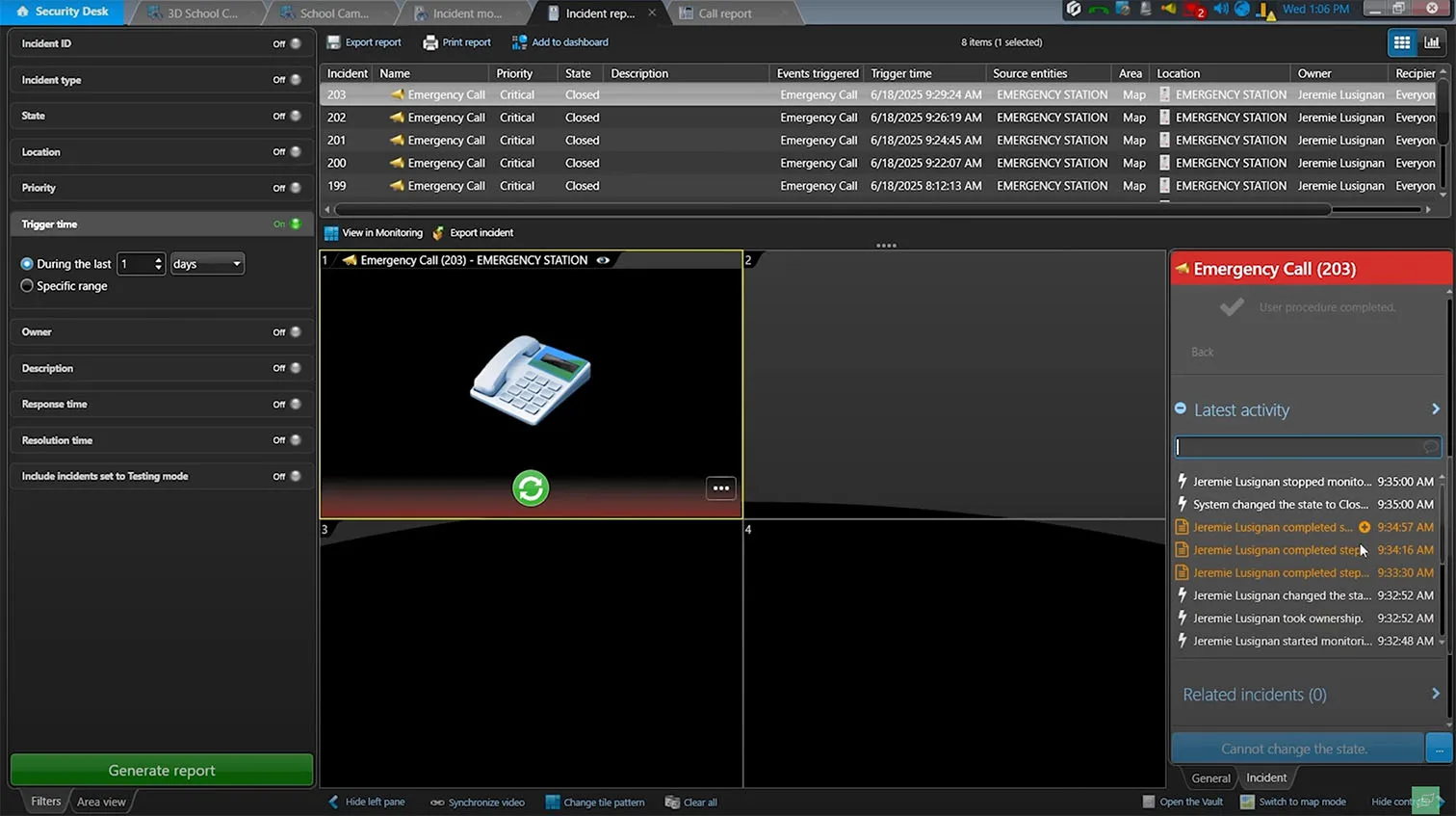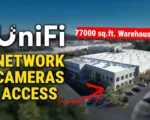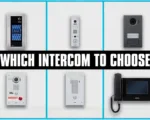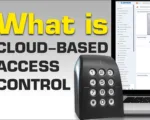Genetec Aiphone integration shows why open platforms matter in physical security. Closed ecosystems can feel seamless yet limited in choice, while open architectures invite best-in-class hardware and software to work together with fewer compromises. In our lab session at Genetec headquarters in Montreal, we built a school-style scenario to evaluate how a unified workflow cuts operator load and shortens response time.
Closed vs open: the practical difference
Apple-style stacks optimize end-to-end control, although options are narrow. Microsoft-style platforms prioritize integration, which brings flexibility, vendor choice, and easier scaling. Physical security follows the same pattern. Aiphone delivers high-quality video intercoms and emergency stations. Genetec provides the open platform and client tools. Together, they create a consistent experience across brands rather than forcing you into one catalog.
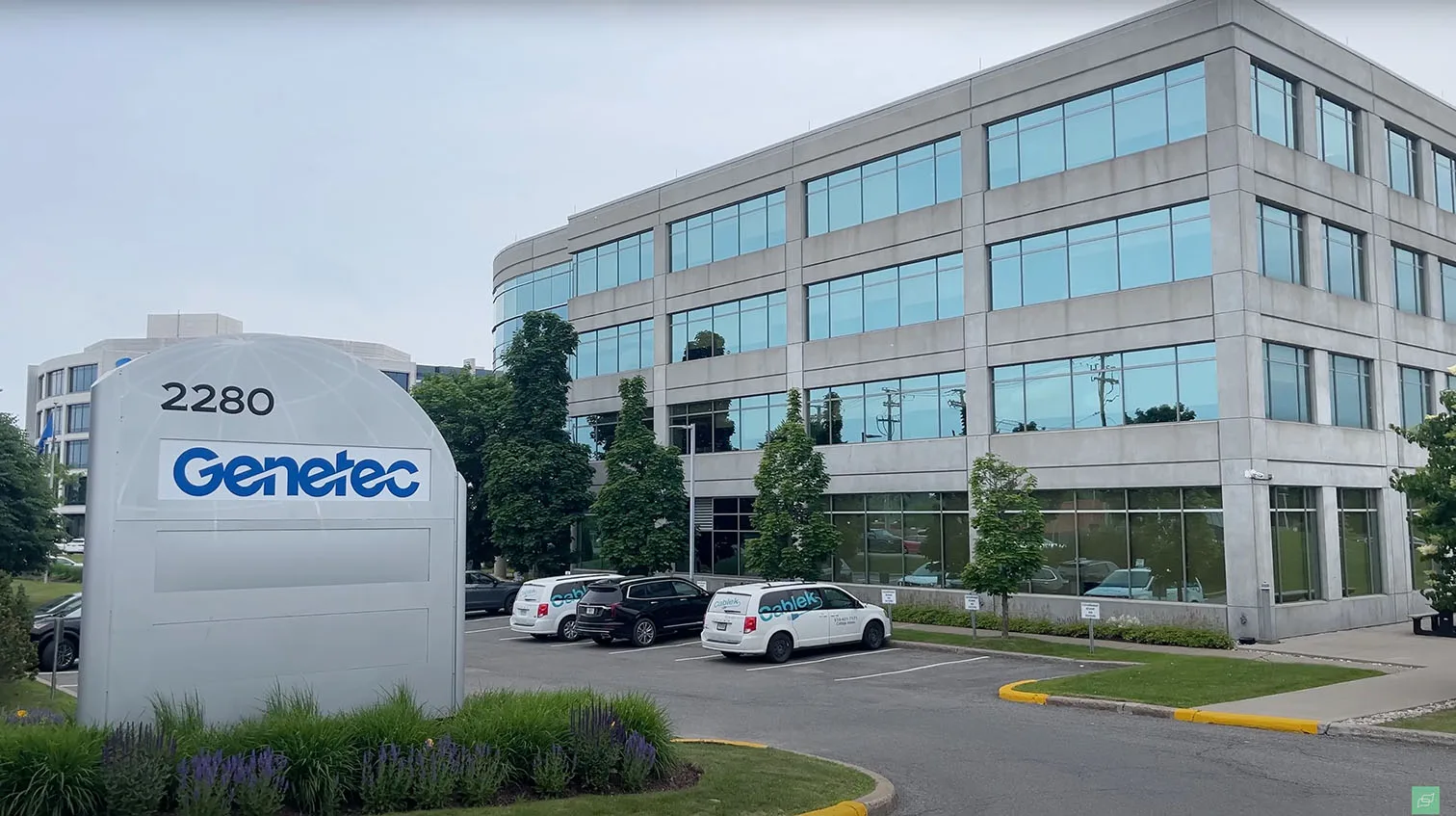
What interoperability unlocks for intercoms
Tying IX Series stations into Security Center via Sipelia lets operators answer video calls in the same client they already use for cameras and access. From that call tile, they can release doors, transfer or roll over calls to outside lines or mobile users, and keep the right person on the line to validate identity. Video from the intercom can pop on call-in, stream live, and record inside Security Center for later audit.
Our test environment and goals
We used both 3D and 2D maps to place devices by zone, then exercised real operator steps: taking a call at the main entrance, pulling a secondary camera for context, and unlocking the door from the same pane. The objective was to verify the workflow under typical school conditions, then generalize lessons for hospitals, airports, malls, and corporate campuses where the same patterns apply.
Unified Security with Genetec Security Center
Genetec Security Center integration brings video, access control, and communications into a single operator interface. Sipelia acts as the voice and intercom layer, so call handling, PA announcements, and incident communications live alongside cameras and doors. This reduces context switching and makes procedures repeatable across shifts.

The IX Series devices used in the demo
We selected three Aiphone IX models to cover front desk, interior, and emergency use cases.
- Aiphone IX-DVM video door station: primary entrance calling with video verification.
- Aiphone IX-DVF flush-mount station: an interior communication point that keeps hallways clean.
- Aiphone IX-DVF-2RA emergency station: SIP-compatible device for parking lots and outdoor help points.
| Device | Role in workflow | Typical placement |
|---|---|---|
| IX-DVM video door station | Call in with video, identity check, and door release from the client | Main entrance, secured lobbies |
| IX-DVF flush-mount station | Staff and visitor assistance, zone paging | Interior corridors, reception counters |
| IX-DVF-2RA emergency station | Call in with video, identity check, door release from the client | Parking lots, campus paths, stadium concourses |
Sipelia communication module in practice
Inside the Security Center, Sipelia presents the intercom status by zone and availability. Operators answer calls, escalate or transfer to outside lines, and trigger door actions without leaving the tile. During emergencies, Sipelia supports sitewide or zoned public address. Because messages are managed at the server level, prerecorded or text-to-speech announcements play in sync across many endpoints and languages.
Beyond schools: where this pattern fits
The same workflow scales to airports, healthcare security, campuses, data centers, and public safety sites. Centralized call handling and incident guidance reduce training time, while the open platform preserves choice across cameras, access control, and communications. For multi-site organizations, unified mapping and naming conventions keep devices discoverable and incidents traceable across regions.
Demo Walkthrough: How Devices Operate Together
Genetec Aiphone integration comes to life when you see operators work a full scenario on both 3D and 2D campus maps. Devices sit in clear zones like the Main Entrance, Library, and Cafeteria, so calls, cameras, and doors line up with the floor plan, you know.
Campus layout and device zoning
We placed Aiphone IX Series endpoints by function, then linked each to its zone in Security Center. The 3D view helps new staff recognize locations at a glance. The 2D map speeds clicks for experienced operators who want fast actions and status at the tile level.
| Map view | Primary purpose | Typical actions |
|---|---|---|
| 3D campus | Orientation and training | Visualize device placement, confirm zone context |
| 2D floor plan | Rapid operations | Answer calls, pull nearby cameras, unlock doors |
Call handling with IX-DVM inside Security Center
A visitor presses the Aiphone IX-DVM video door station at the main entrance. The intercom call pops up in the Genetec Security Center client. The operator answers, sees the intercom video tile, and pulls a second camera for situational context without leaving the pane. After confirming identity, the same tile exposes the door release, so access is granted from one screen, and the 2D map updates the door state.
How audio and video streams appear in the client
Sipelia communication module manages the SIP session and shows intercom presence by color. Video from the IX-DVM displays on call-in, can stream live, and can be recorded in the case timeline. This keeps the verification clip and the access action together for audit and training.
Why this mapping matters for schools and campuses
Zoned devices reduce hunting for the right endpoint under stress. Operators see at a glance that the call came from the Main Entrance, that the nearest corridor camera is one click away, and that door controls are part of the same workflow. The model scales to hospitals, airports, and malls where layout clarity, not just device count, drives response time.
Handling Missed Calls and Mobile Failover
If staff are away from the desk, Genetec Security Center integration supports a clean failover path to mobile. You avoid missed calls and keep door control in the hands of authorized users.
What happens when no one is at the desk
We configured a short timeout. If the interface client does not answer after 10 seconds, the live Aiphone call rolls over to the Genetec mobile app. The mobile operator sees the incoming intercom video, talks to the visitor, and triggers door release from the phone.
Mobile workflow and permissions
Access follows role-based permissions defined in Security Center, so only authorized users receive sensitive calls or can unlock. Call tiles show source and zone, which helps roaming supervisors confirm they are acting on the correct entrance before they release a door.
Design tips for distributed sites
Use short, human-readable names for devices and zones so rollover calls are self-explanatory on small screens. Set distinct timeouts by entrance risk. For high-traffic lobbies, route to a team queue on mobile. For after-hours doors, send to an on-call list with audit logging enabled.
Simple call flow you can replicate
- The visitor presses IX-DVM at the Main Entrance.
- Desktop client rings for the set interval.
- On timeout, the call forwards to Genetec mobile.
- Mobile operator verifies video, speaks with the visitor, and unlocks.
- The system logs the call path and the access action for later review.
This approach keeps intercoms useful when staffing shifts, guards are on patrol, or sites operate across buildings and time zones.
Emergency Response: The Missing Child Scenario
Aiphone Genetec integration shows its value when a teacher initiates an emergency from the Aiphone IX-DVF-2RA emergency station, and the whole workflow stays inside Security Center.
Trigger and rapid escalation
A teacher presses the emergency station. Security Center flags a critical call, paints the device tile with an alert color, and routes audio to the operator. If you enable a third-party beacon or strobe, the platform can fire that output at the same time to create a visible signal at the scene.
Guided actions in Mission Control
Mission Control Genetec opens with a clear, step-by-step runbook. Typical first steps: verify the emergency over two-way audio, trigger a campus-wide public address through the Sipelia communication module, notify responders, then document the incident.
| SOP step | Operator action | System feedback |
|---|---|---|
| Verify | Speak with teacher on the live intercom | Call tile shows active stream and source zone |
| Notify | Trigger PA announcement via Sipelia | Predefined message plays to selected zones |
| Coordinate | Dispatch security and call authorities | Event timeline logs recipients and time stamps |
| Document | Add notes and close incident | Report binds video, audio, and operator inputs |
For integrators who want a deeper look at device capabilities and field options, see Aiphone IX Series coverage in our article Aiphone Intercom Systems at ISC West 2025: Expert Insights for Integrators.
Why audio and video together improve outcomes
Audio provides context fast: tone of voice, background cues, and precise instructions. Video confirms identity and environment. In a missing child scenario, that combination helps operators act decisively while preserving a complete record for the post-incident review.
Incident Reports and Operator Guidance
After the event, Security Center’s Incident Report turns a stressful response into structured data that teams can learn from.
What the report captures
The report binds call metadata, live and recorded video from Aiphone intercoms, PA actions, door releases, notes, and exact timestamps. You can see who answered, how long each step took, and which devices were involved.
Train staff and refine SOPs
Supervisors can replay the sequence and compare it against policy. If verification took too long or announcements reached the wrong zone, adjust the Mission Control workflow and test again during drills. For programs that lean on analytics to speed review, our roundup of tools can help you evaluate options that complement a unified platform: 5 Best Security Video Analytics Software 2025 – Features & Reviews.
Practical tips for campuses and enterprises
- Use plain-English names for devices and zones so mobile failover is unambiguous.
- Keep PA scripts short, consistent, and multilingual where needed.
- Schedule quarterly reviews of Incident Reports to measure response times and confirm improvements.
- Tag incidents by type so you can filter trends and update training where gaps appear.
This approach keeps operators focused during the emergency and gives leadership the evidence they need to improve procedures without adding operational overhead.
Public Address and Sipelia Integration
Genetec Aiphone integration turns paging into a repeatable workflow instead of a one-off action. Inside the Sipelia communication module, operators launch campus-wide or zone-limited messages from the same pane they use to answer intercom calls and release doors.
How PA fits into a unified workflow
Operators trigger announcements directly from Security Center. You can bind a PA action to an incident step in Mission Control or expose it as a hot action for fast use during drills and real events. Because audio, video, and access live on one unified security platform, the PA you fire can also bookmark video, tag the zone, and log the operator who executed it.

Text-to-speech, live mic, and prerecorded options
Text-to-speech works for dynamic scripts, a live microphone covers evolving scenes, and prerecorded clips handle compliance language. Clips are stored server side, so playback stays synchronized across all Aiphone IX Series endpoints.
| Paging mode | When to use | Operational benefit |
|---|---|---|
| Text to speech | Fast-changing incidents or multi-lingual notices | Instant updates without audio recording steps |
| Live microphone | Two-way coordination in active events | Real-time guidance with human tone and context |
| Prerecorded message | Drills and compliance announcements | Consistent wording and perfect sync across zones |
If you plan to tie announcements to door schedules or cloud credentials, see platform-level patterns in our guide Cloud Access Control with Aiphone AC Nio: Full Breakdown.
Zoned delivery and mobile relays
Security Center routes PA by zone. That means a code yellow can reach classroom intercoms without blasting the parking lot. You can also assign user groups so the same message lands on the Genetec mobile app for on-shift staff who are away from a desk.
Language choices that match your campus
Keep English and French versions of the same script. Mission Control can prompt the operator to choose the language at run time, which reduces hesitation and ensures the correct audience hears the right words.
Mapping Devices in Security Center
Clear 2D maps turn alarms into location-aware actions. In Genetec Security Center integration you place each Aiphone IX Series station in its real zone, then bind events and responses to that context.
Build 2D maps operators actually use
Start with a simple floor plan. Drop the Aiphone IX-DVM at the main entrance, position the IX-DVF in interior corridors, and place the IX-DVF-2RA in parking areas or playgrounds. Name zones in plain English and keep icons consistent so new operators can learn the layout in minutes.
Zone-aware actions and automation
Once devices are mapped, you can target responses. A missed call at the library rolls over to a librarian group, while a call from the east lot triggers a strobe and opens a nearby camera tile for situational awareness. Event-to-action rules can also change PA routing, ensuring only the affected wing hears the announcement.
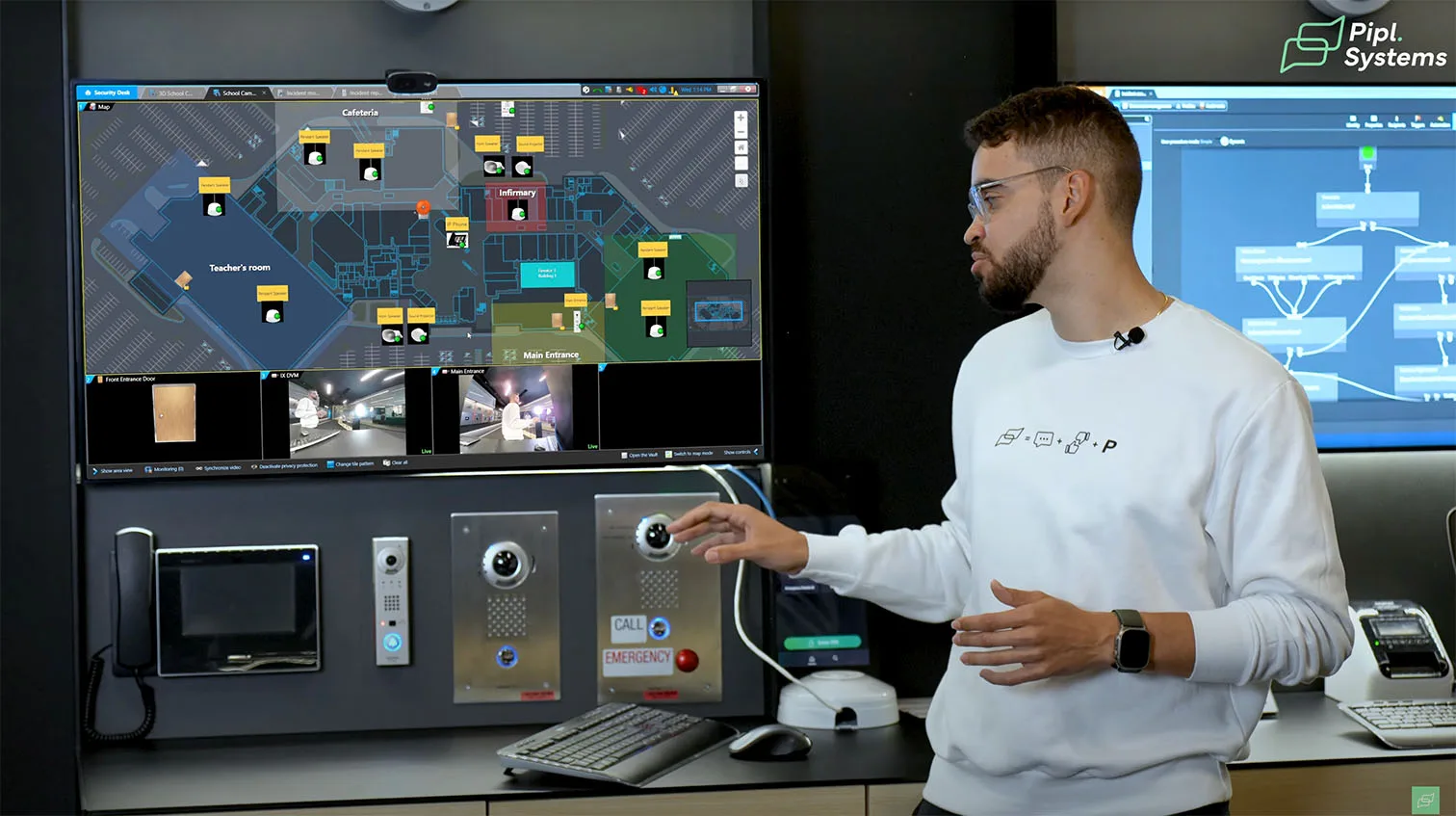
Why maps matter for large campuses
Big sites need visual shortcuts. Maps reduce click depth, cut response time, and make handoffs between shifts smoother because the location is obvious. They also help during audits since Incident Reports point to the exact device and zone involved. For a broader look at entrance panels, indoor stations, and guard consoles that map cleanly into multi-building projects, see REVIEW Aiphone IXG Intercom Solution Updates: Entrance Panel, Indoor Monitor, Guard Station, Gateway.
Practical mapping tips
- Use one naming convention for buildings, floors, and wings so filters behave predictably.
- Color-code zones by risk level to guide prioritization under stress.
- Pin a nearby overview camera next to each intercom tile to add context without extra clicks.
- Test rollover rules during drills to confirm mobile failover routes match staffing patterns.
Conclusion: Why This Integration Stands Out
Genetec Aiphone integration proves why security system interoperability matters. You operate intercoms, doors, video, and voice from one unified security platform, which shortens response time and reduces operator error.
What makes it different
Aiphone IX Series integration brings two-way audio and video into the same Genetec Security Center workspace where you already manage cameras and access. Sipelia communication module handles call routing, text-to-speech, and PA without forcing operators to switch tools. Mission Control Genetec adds step-by-step SOPs so critical tasks happen in the right order, every time.
Capability to outcome
| Capability | Outcome in daily operations |
|---|---|
| Single interface for intercom, access, and video | Faster decisions and fewer missed steps |
| PA and text-to-speech tied to incidents | Consistent messaging across zones and shifts |
| Mobile failover for unanswered calls | Continuity when the desk is unmanned |
| Incident reports and audit trails | Clear evidence for training and compliance |
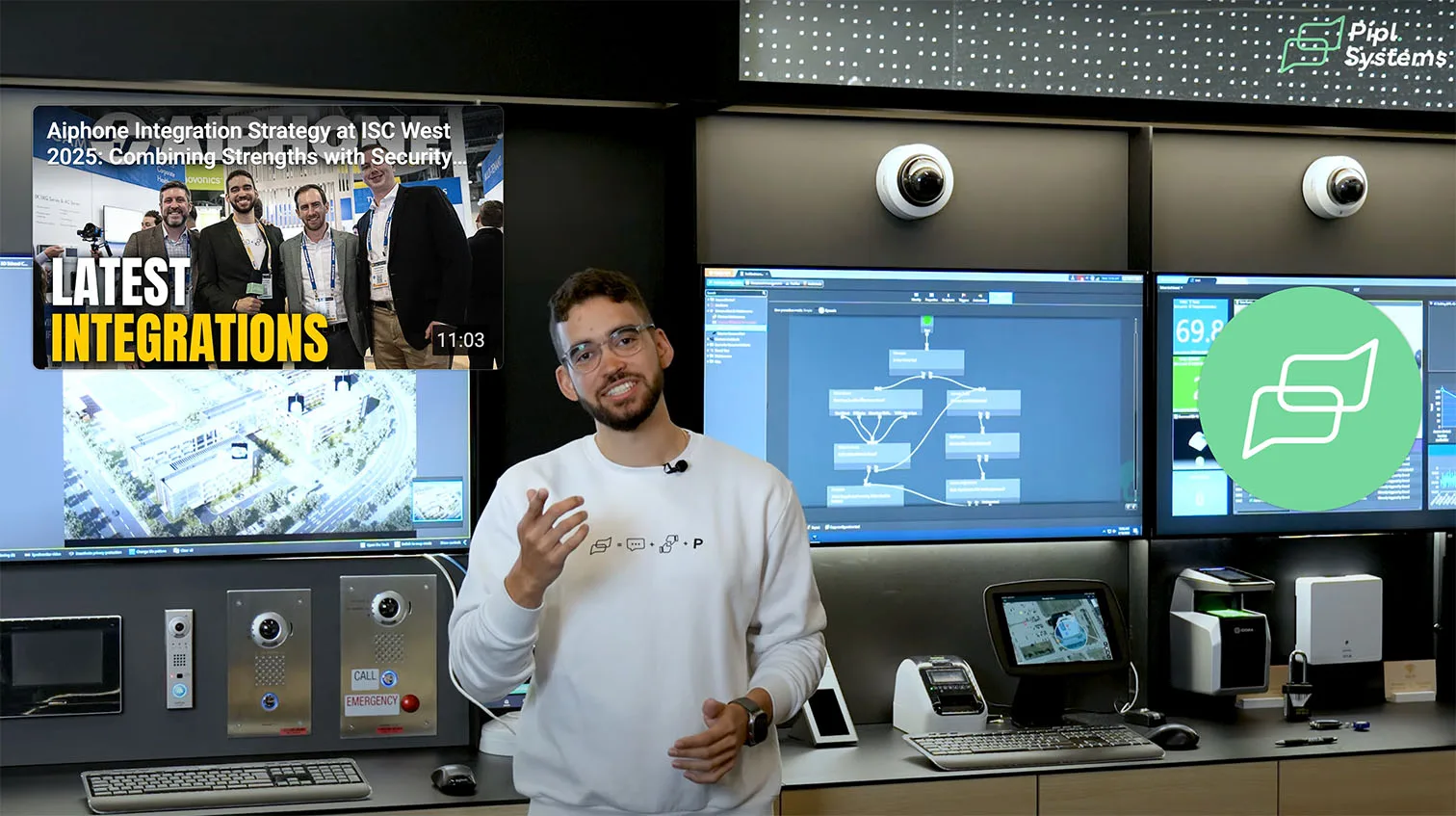
Built for more than one vertical
The same workflow scales from schools and campuses to hospitals, airports, corporate sites, and public venues. Genetec Security Center integration lets you map devices to zones, apply role-based permissions, and replicate policies across sites without rebuilding the stack.
Best practices for Genetec and Aiphone deployment
- Standardize naming for buildings, floors, zones, and devices to keep searches and reports clean.
- Pair each intercom with a nearby overview camera for context at first answer.
- Use Mission Control to codify SOPs for emergencies, missed calls, and door releases.
- Store prerecorded PA messages on the server and keep bilingual variants ready.
- Test mobile rollover paths during drills to confirm staff coverage outside the control room.
FAQ – Genetec and Aiphone Integration
1) How does Genetec integrate with Aiphone intercoms?
Through the Sipelia communication module inside Genetec Security Center. You register Aiphone IX Series endpoints, route calls, answer with live video, and trigger door release from the same client.
2) Can Genetec Security Center for schools and campuses scale to hospitals?
Yes. The platform supports multi-site management, zone-based policies, role permissions, and incident workflows that transfer cleanly to healthcare, airports, corporate campuses, and other regulated environments.
3) What is the role of the Sipelia communication module?
Sipelia handles voice and video communications, including text-to-speech, live mic paging, prerecorded announcements, call transfer or rollover, and logging. It keeps PA and intercom actions inside the unified console.
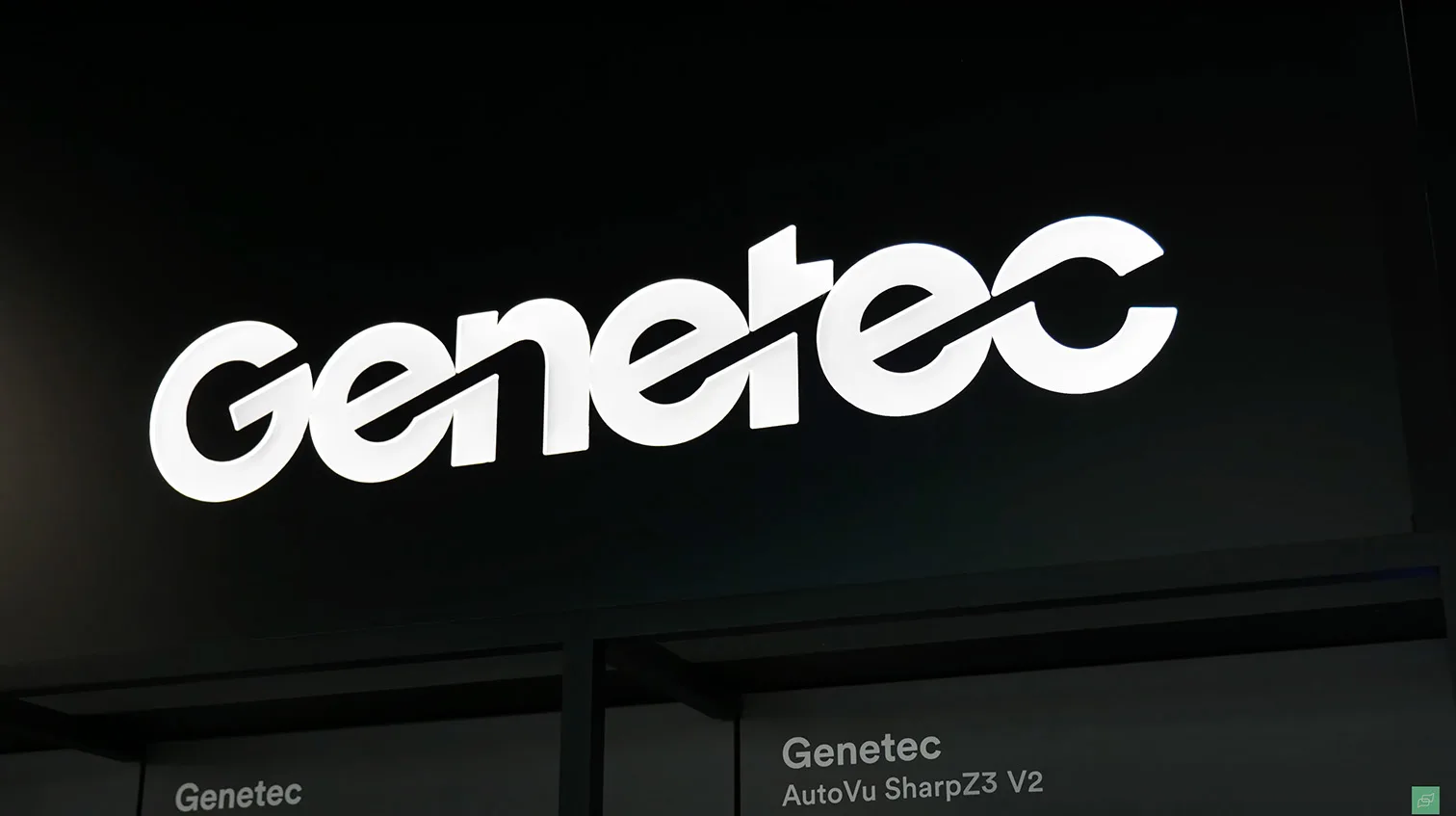
4) How does Mission Control Genetec guide operators?
Mission Control provides SOP-driven incident management. It presents checklists, automates actions like PA or camera bookmarks, tracks decisions and timing, and records the full audit trail for after-action review.
5) Is Aiphone IX Series integration compatible with mobile failover?
Yes. If a desk client does not answer, calls can roll over to the Genetec mobile app or SIP endpoints. Operators can view video, talk down, and unlock doors from the app.
6) How is emergency communication with Aiphone and Genetec logged?
Security Center stores call logs, PA events, operator actions, and camera bookmarks with timestamps and user IDs. Incident Reports consolidate the sequence for training, compliance, and external reporting.
